What are The World’s Thinnest Watches Per Category?
Thin, thinner, thinnest... sometimes too thin.
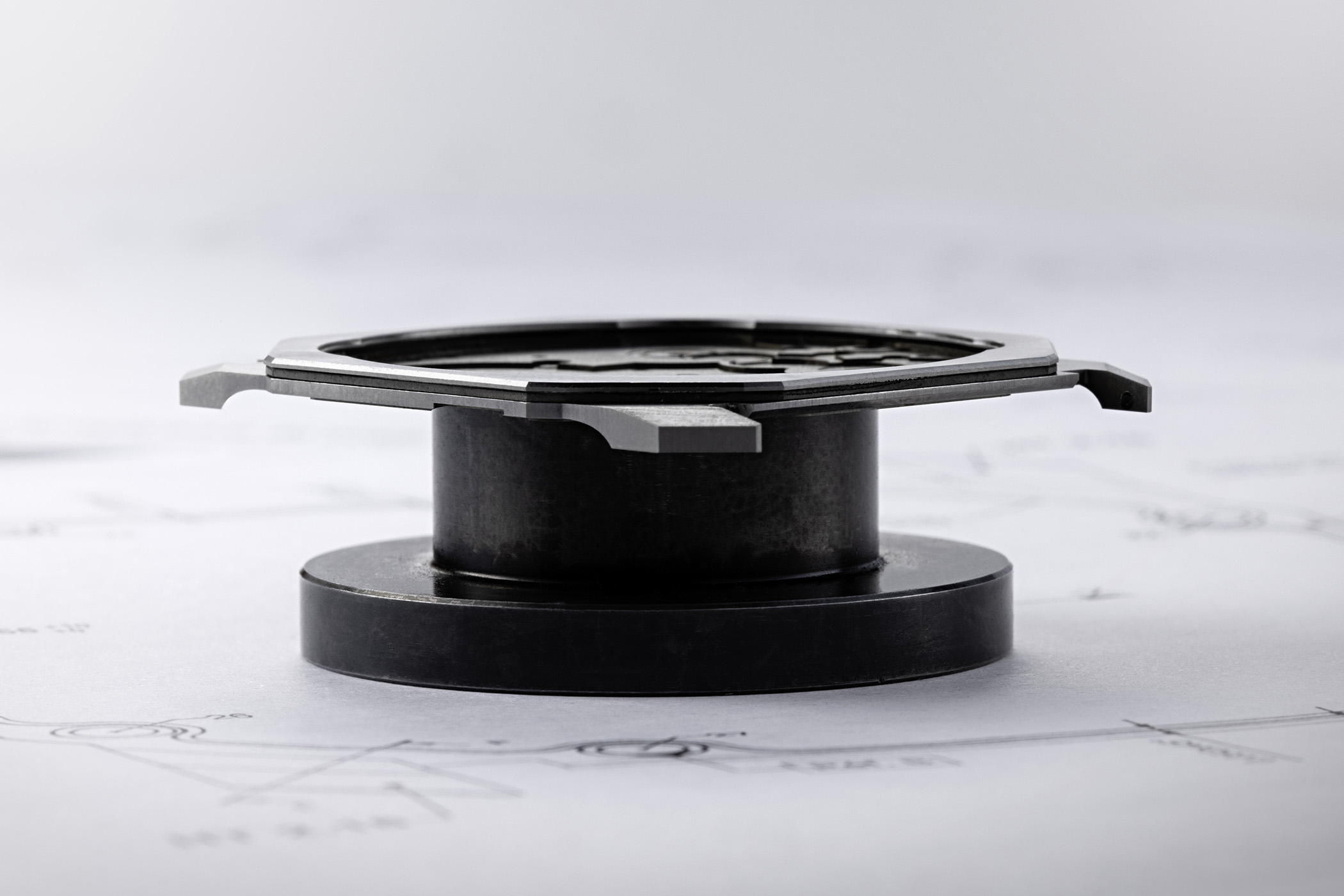
Ultra-thin watchmaking is a fascinating topic, one of our favourite areas of expertise here, at MONOCHROME. Ultra-thin watchmaking is horology at its purest, a no-compromise search for the slenderest movement that has to be considered a true complication. While high-watchmaking often seeks to bring as many complications as possible in a single movement, ultra-thinness is all about miniaturisation. We’ve recently published a video retracing the battle for the world’s thinnest mechanical watch, a race that implied Bulgari, Piaget and Richard Mille, ending up with a record thin watch of 1.70mm, the Octo Finissimo Ultra COSC. But let’s dive deeper into the topic, by looking at the world’s thinnest watches per category. The thinnest mechanical watch? The thinnest chronograph? The thinnest watch ever? We have them all here.
Note: this article is meant to become one of MONOCHROME’s classics and will be updated according to the state of the industry, depending on the newest developments in the field of ultra-thin watchmaking.
Thinnest Mechanical Watch (Commercially available) – Bulgari Octo Finissimo Ultra COSC (1.70mm)
Let’s start immediately with the crown jewel, the title that many brands have wanted for years, that of the world’s thinnest mechanical watch. While hardly a topic for decades, the mid-2010s saw a return of interest in ultra-thin, with brands such as Piaget and Bulgari showing strong interest in this specific field of the watch industry. The record holder until 2013 was the Jaeger-LeCoultre Master Ultra-Thin Jubilee at 4.05mm until the introduction of the Jaeger-LeCoultre’s Master Ultra-Thin Squelette at 3.60mm and the Piaget Altiplano 900P at 3.65mm.
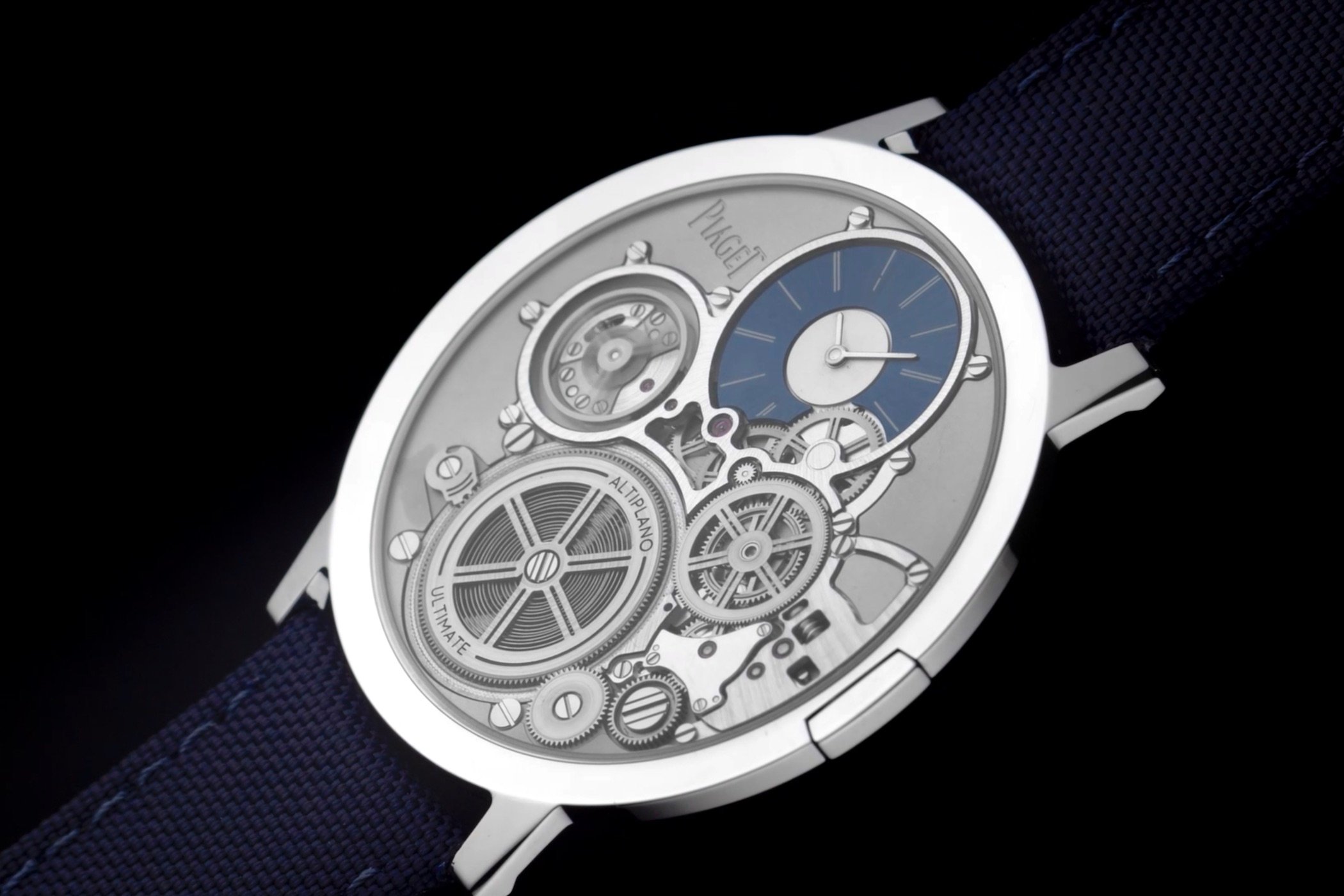
But in 2018, the situation changed drastically when Piaget unveiled the highly impressive and technically mind-blowing Altiplano Ultimate Concept, a new world record with a 2mm thin case, involving a complex construction where the movement and case were merged as a single piece. As its designated competitor in the field of ultra-thin watchmaking, Bulgari answered by unveiling the Octo Finissimo Ultra with its 1.80mm thin case, a new world record that only lasted for a few months before Richard Mille, a brand not usually associated with this kind of expertise, released a 1.75mm credit card-shaped watch.
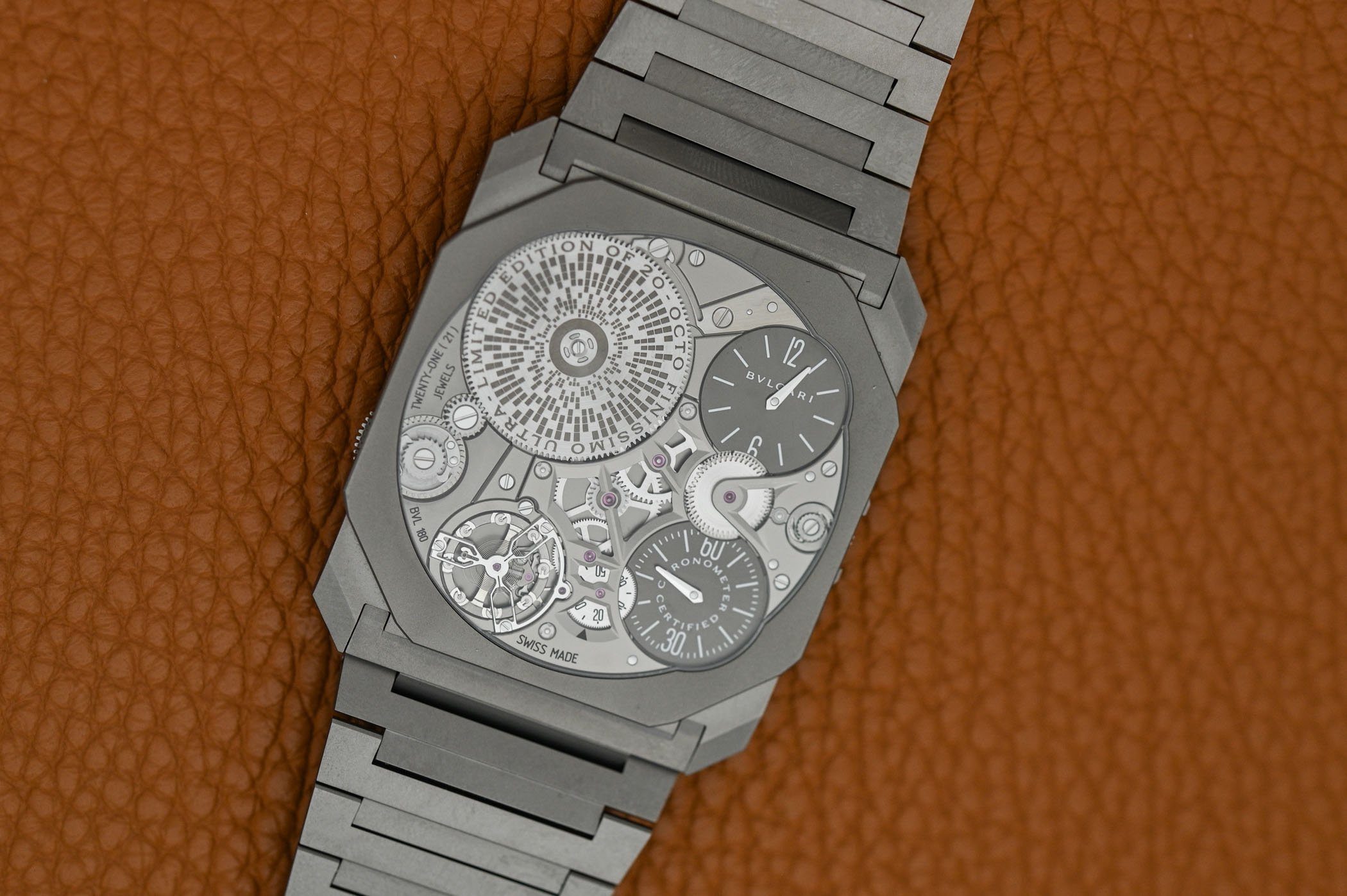
But in 2024, Bulgari decided that the crown had to come back to Italy and unveiled the Octo Finissimo Ultra COSC, with a 1.70mm case – thus 0.05mm thinner than the RM, or about the size of a human hair. From a technical perspective, the Ultra COSC relies on the same principle as the first Octo Finissimo Ultra, with a movement developed with Concepto and a construction where the caseback acts as the mainplate of the movement. In the same vein, the regulator-like display with separate time indications avoids superimposed hands. And instead of a standard crown (that would be larger than the height of the case), two horizontal knobs are placed on each side of the case. And the most impressive is that, despite the incredibly low tolerances on the movement and parts, Bulgari successfully made this watch precise enough to be a certified chronometer. Far from a prototype, the world’s thinnest mechanical watch is actually meant to be worn.
Thinnest Mechanical Watch (Prototype Stage) – Konstantin Chaykin ThinKing (1.65mm)
Credit where credit is due, the Bulgari Octo Finissimo Ultra COSC is still, for now at least, the thinnest mechanical watch you can buy. And, as said, one that’s not only available (with a lot of money…) but also one that’s fully functional as a wristwatch and tested, and certified for its precision. Far from a small achievement. But, in September 2024, an unexpected new contender entered the race for the thinnest mechanical watch, a small independent watchmaker… from Russia. Indeed, Konstantin Chaykin, mostly known for his range of Wristmons (but there are far more complex watches in his portfolio – the Mars Conquerer MK3, the Genius Temporis and the Cinema watch, for example), came up with the Thinking, a prototype of a mechanical watch measuring, according to his claims, only 1.65mm in thickness – thus beating the existing record of Bulgari by 0.05mm.
What do we know about the Konstantin Chaykin ThinKing? Well, we’ve seen the watch in the metal in a well-advanced prototype stage and it is astonishingly thin. Besides the number, the most impressive fact about this watch is its origin, being the creation of a small atelier near Moscow, without the whole Swiss ecosystem and engineering consultant. It’s also made using highly traditional solutions – no exotic materials, no futuristic regulator… How was it made this thin? First, the watchmaker has split the classic balance architecture into two elements which are normally attached one on top of another on the balance’s staff by adding a roller balance wheel. This drastically reduces the height of the balance staff. The balance wheel, still connected to the hairspring, is now teethed and connected to a roller wheel. The display is also made ultra-thin with the minutes and hours displayed by the actual wheels in the movement. The caseback is also the main-plate of the movement with exposed jewels.
However, this watch doesn’t come alone and is paired with a so-called “PalanKing carrier case.” As you can see, the main wristwatch doesn’t have a crown and thus can’t be wound or adjusted, like it’s the case with the Octo Finissimo Ultra or the Piaget Altiplano Ultimate Concept. As such, Chaykin developed an additional carrier that includes a crown and a series of gears connected by a set of keys in the back of the main watch to wind the movement and adjust the time. It’s not all bad though, as this PalanKing includes something extra cool, an automatic winding system with a micro-rotor. When paired with its carrier case, the Konstantin Chaykin ThinKing is 45mm x 5.4mm. It’s also more rigid and does everything a watch should. When the carrier case is left behind, the watch is 40mm x 1.65mm, supposedly rigid enough but non-adjustable and impossible to wind.
Will these concessions be addressed in the final watch? Will the final watch actually be made? And will it retain this thinness? For now, it’s too soon to tell but one should be amazed by the level of traditional craftsmanship and cleverness that went into this watch.
Thinnest Tourbillon Watch – Piaget Altiplano Ultimate Concept Tourbillon (2mm)
While having lost the title for the thinnest mechanical watch, Piaget wasn’t ready to let all records go to its competitor and decided to upgrade its Altiplano Ultimate Concept watch with a tourbillon, without adding any more thickness to the 2mm case. While the record for the thinnest tourbillon watch was the property of Bulgari until early 2024, with the Octo Finissimo Tourbillon Automatic at 3.95mm (housing the 1.95mm BVL 288 calibre), it now comes back to Piaget with the 2mm Altiplano Ultimate Concept Tourbillon.
A paper-thin watch at just 2mm in thickness that looks almost two-dimensional, the Piaget AUC Tourbillon retains most of the solutions found in the time-only version. Major upgrades were made, however, to incorporate the anti-gravity device into this almost nonexistent case, and the reality is that almost 90% of the parts are new. The architecture still involves the idea of fusing the case and movement into a single component. As for the tourbillon, instead of a conventional construction where it is held by its underside, plus eventually with an upper bridge, the tourbillon cage is guided peripherally by ball bearings. The result is surely mindblowing.
Thinnest Automatic Watch – Bulgari Octo Finissimo Tourbillon Automatic (3.95mm)
While it has lost the title of the world’s thinnest tourbillon watch, the Octo Finissimo Tourbillon Automatic still holds the world record for the thinnest automatic watch ever created. Unveiled in 2018, this complex watch with an openworked movement and a tourbillon regulator measures only 3.95mm in height. Its movement measures just 1.95mm in thickness. The record for the thinnest automatic watch was made possible by using a peripheral rotor to wind movement, instead of a central oscillating weight or a micro-rotor, two solutions that would have added substantial thickness to the movement.
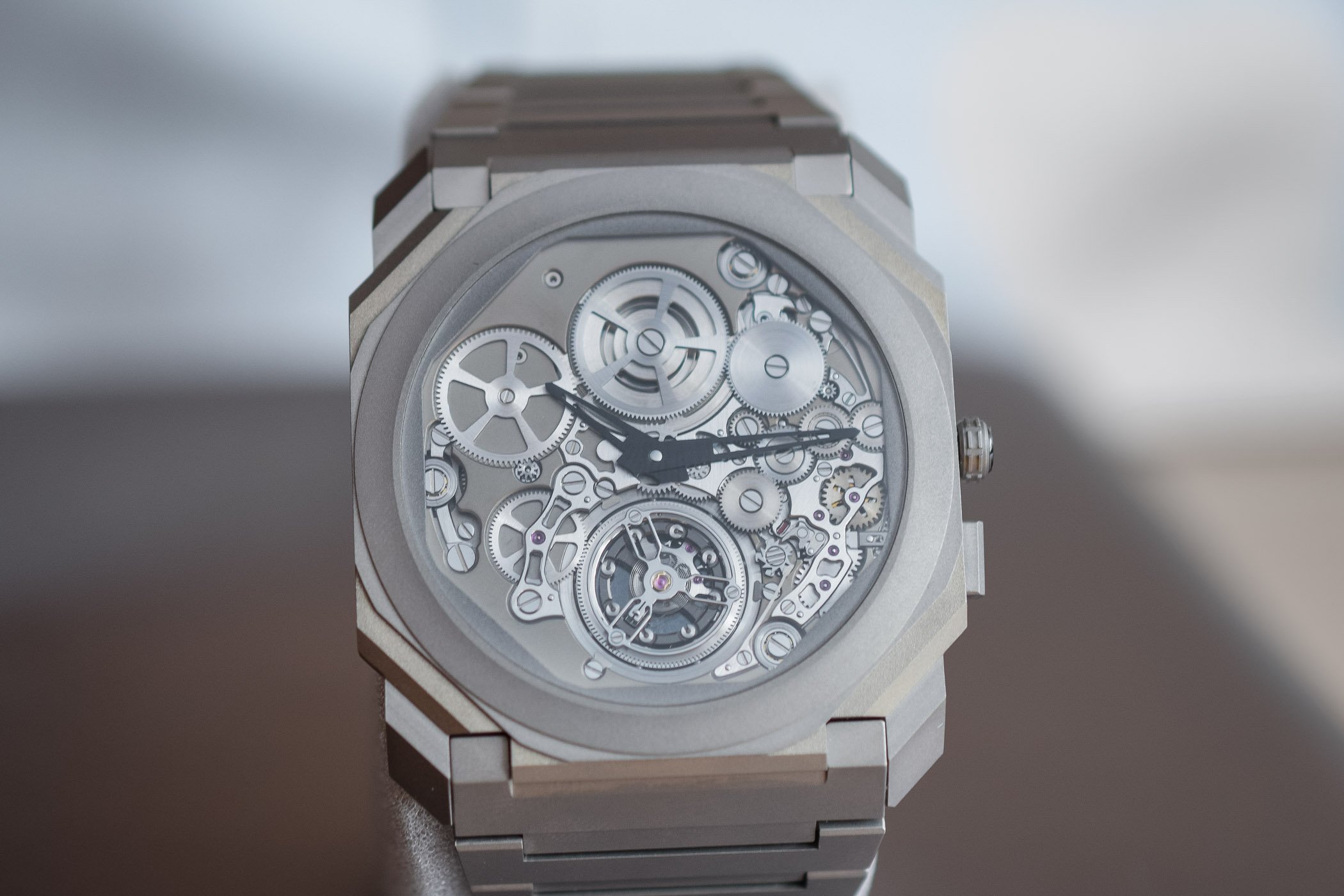
Here, the oscillating weight rotates around the movement and is equipped with a ball-bearing system. In fact, even by adding this self-winding mechanism to the movement, Bulgari retained the same 1.95mm thickness as the hand-wound Octo Finissimo Tourbillon, which was the thinnest tourbillon watch when unveiled in 2015.
Thinnest Time-only automatic watch – Piaget Altiplano Ultimate 910P (4.30mm)
While not per se a record-breaking watch, the thinnest non-tourbillon automatic watch, or call it the world’s thinnest time-only automatic watch still is the fairly impressive Piaget Altiplano Ultimate Automatic 910P. Measuring only 4.30mm in thickness, this watch was at the time of its introduction in 2017 the thinnest automatic watch ever created, thanks to a construction that will later be improved for the Altiplano Ultimate Concept. It indeed relies on a caseback carved and milled to receive the movement’s component, thus acting as a mainplate. Also, the movement is built around the plate that serves as a dial, and not underneath it, again saving space. Finally, to save even more space, the movement is wound by a peripheral rotor, which sits on the dial side and rotates around the movement.
Thinnest Chronograph – Bulgari Octo Finissimo Chronograph GMT (6.90mm)
Due to their complexity and their link with sports, chronograph watches have not often been looked through the scope of ultra-thin watchmaking. Still, the two masters of ultra-thin, Piaget and Bulgari, couldn’t miss the opportunity to break the record for the world’s thinnest chronograph watch. In modern times, the first record was broken by Piaget, which unveiled the Altiplano Chronograph Flyback in 2015, with an 8.24mm thin case and a 4.65mm movement.
The current record for the world’s thinnest chronograph is, unsurprisingly, in the hands of Bulgari with the Octo Finissimo Chronograph GMT Automatic. Measuring only 6.90mm in total, this watch is impressive on many levels. First of all, it incorporates a state-of-the-art chronograph movement with column wheel and horizontal clutch (a vertical clutch would have been too thick in this context). Second, it is an automatic movement, again with a peripheral rotor to save space. Finally, the large diameter movement, which is only 3.30mm in thickness, also includes an independent GMT function that can be adjusted via a pusher on the left side of the case – making this Octo Finissimo Chronograph a highly practical watch and a great daily wearer. A slightly revised and even more practical version in steel has been presented recently, this time with 100m water-resistance but an 8.75mm case.
Thinnest Chronograph Tourbillon – Bulgari Octo Finissimo Tourbillon Chronograph (7.40mm)
Again another record by Bulgari (which in total smashed 9 world records, some of them lost and regained afterwards) but this time with a more niche complication, or should I say combination of complications. This time, in 2020 and for its 6th record, Bulgari unveiled the Octo Finissimo Tourbillon Chronograph, securing the world’s thinnest Tourbillon Chronograph watch on the market. As said, maybe a bit less of an achievement on paper, compared to the aforementioned watches, but a technical prowess nevertheless. With a case of 7.40mm and a movement of 3.50mm only, this addition to the Octo Finissimo collection featured an unprecedented mechanism, which can be observed through the caseback and is visually stunning. Once again, thinness is obtained thanks to a large movement with a peripheral rotor because, yes, this combination of a tourbillon and a chronograph is also selfwinding.
Thinnest Perpetual Calendar – Bulgari Octo Finissimo Perpetual Calendar (5.80mm)
For its 7th record in a row, Bulgari (once again…) wasn’t competing with Piaget but with Audemars Piguet. Indeed, in 2018, AP unveiled its Royal Oak RD#2 concept watch, becoming reality a year later with the Royal Oak Selfwinding Perpetual Calendar Ultra-Thin, back then the thinnest perpetual calendar watch ever created, at 6.30mm. Bulgari couldn’t let the record in the hands of another watchmaker and unveiled in 2021 the Octo Finissimo Perpetual Calendar, an automatic QP with a case of 5.80mm, securing the title of the world’s thinnest perpetual calendar watch. Barely thicker than the automatic Finissimo, the Octo QP shares the same micro-rotor base movement but to gain space, the perpetual calendar mechanism isn’t a module on top of the calibre but is integrated into the movement – thus making sure that its calibre BVL 305 measures only 2.75mm in thickness (vs. 2.23mm for the time-only micro-rotor BVL 138).
Thinnest Minute Repeater – Bulgari Octo Finissimo Minute Repeater (6.85mm)
One of Bulgari’s oldest records, which was broken in 2016, the Octo Finissimo Minute Repeater remains to this day the world’s thinnest minute repeater watch ever created. With its 3.12mm movement and 6.85mm case, it is hard to imagine how it was possible to integrate all the parts that a chiming watch requires – in addition to the classic timekeeping functions, a minute repeater has to integrate gongs, hammers, a centrifugal strike governor and all the cams, racks and levers that “read” the time. The calibre BVL 362 inside this Octo Finissimo Minute Repeater is hand-wound and comprises no fewer than 362 individual components – all in a strikingly compact space of 3.12mm. And while sound needs space in a minute repeater watch, there was no such option here so the dial has been cut out to amplify the sound of the gongs.
(possibly) thinnest Pocket watch – Vacheron Constantin “Knife” ref. 10726 (around 3.5mm, 0.94mm movement)
Ultra-thin watchmaking is far from a modern topic and has been around for decades. That being said, finding what’s the world’s thinnest pocket watch is far more challenging than it is for today’s thinnest mechanical wristwatch. This is why we’re listing what we think is possibly the thinnest pocket watch ever made. After some research, it appears that during the 1920s, all three brands from the Holy Trinity (Patek, Audemars, Vacheron) had their take on ultra-thin, so-called “knife” or “blade” pocket watches. What could well be the thinnest pocket watch ever created is this Vacheron Constantin reference 10726, a watch with a movement measuring… 0.94mm thin. Yes, you read correctly, less than 1mm, at a time when CNC machining did not exist. The large movement (17.5 lines, about 39.5mm) allowed to spread out the parts on a horizontal plane, rather than stacking them vertically. However, as impressive as the record might be, the 10726 was produced in only 3 examples and proved fairly unreliable.
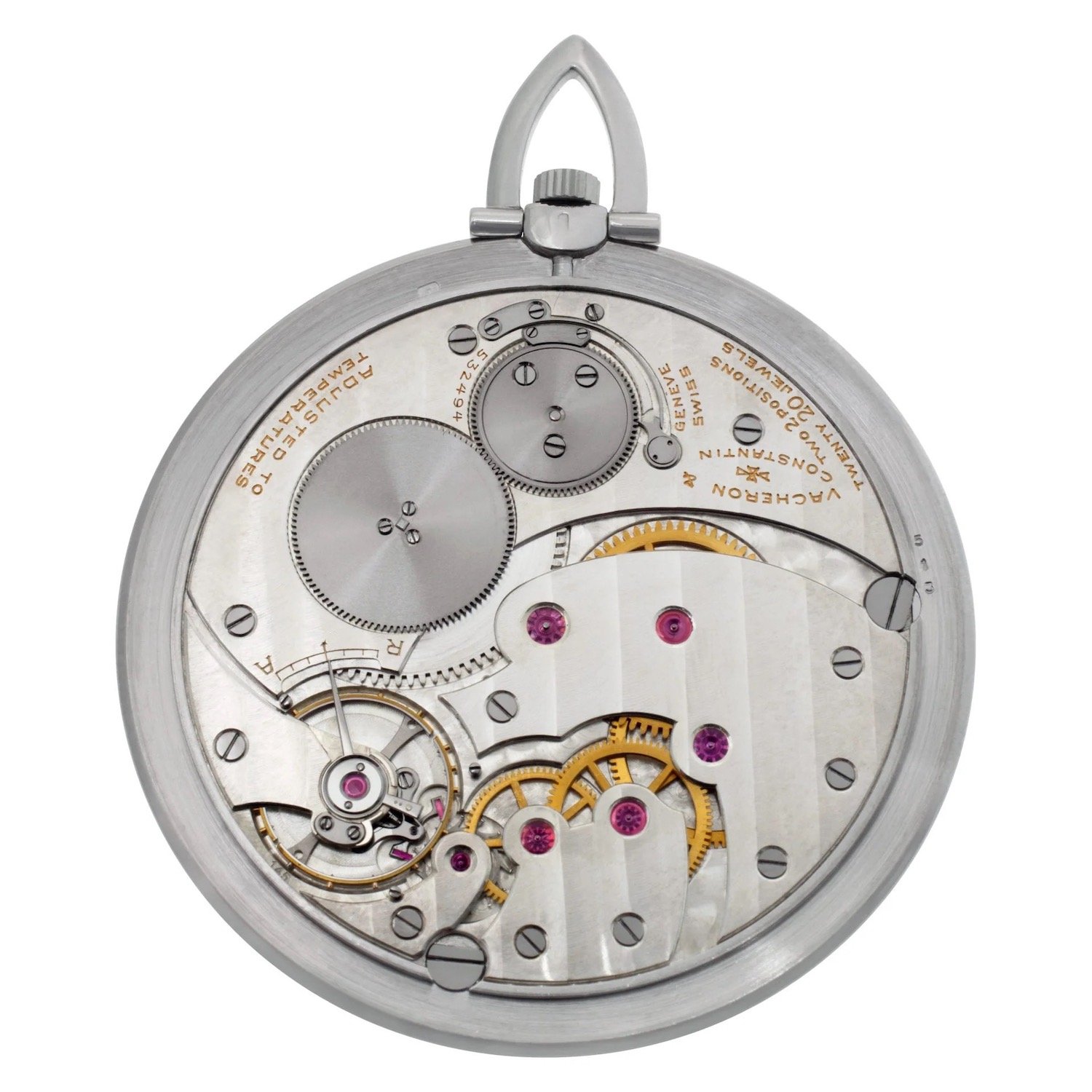
More reliable and produced for about 50 years was the Jaeger-LeCoultre calibre 145, measuring only 1.38mm in thickness and found in multiple blade/knife pocket watches from 1907 up to the 1960s. Looking closely at the JLC movement, we can see great similarities with the movement of the VC above. It was common for manufacturers to use outsourced movements back then and Jaeger-LeCoultre was one of the main providers of ébauches at the time – supplying AP, Patek or VC.
Thinnest watch ever made – Ebauches SA Delirium IV – Eterna Linea Museum Watch (0.98mm)
The race for thinnest mechanical watch that we’ve recently witnessed is only the second battle in a war that started in the 1970s and opposed Switzerland and Japan, but then involved a rather new technology, quartz. Free from the constraints of mechanical movements, Japanese watchmakers Seiko and Citizen secured not only a prominent share of the watch market but also their position as technological leaders, placing them far ahead of the Swiss – which also caused the so-called quartz crisis and the death of many watch brands in Europe.
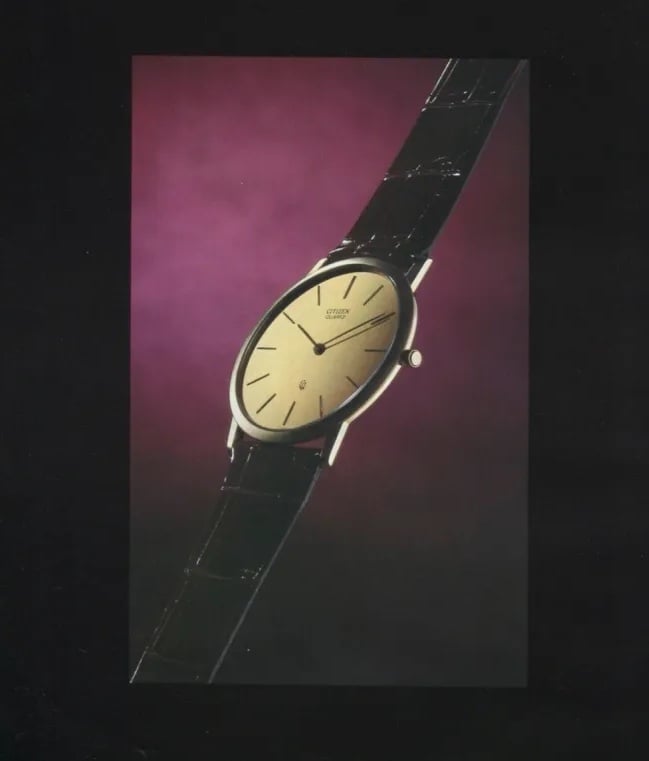
By mastering the quartz movement technology by the mid-1970s, Japanese watchmakers started to improve their movements and miniaturize them to the max. In May 1978, Citizen presented Exceed Gold with a battery-powered movement of 0.98mm. The watch, however, measured 4.1mm due to the height of the battery and handset. In July 1978, Seiko answered with the Calibre 9320 measuring 0.90mm, housed in a watch with a 2.5mm profile, a world record back then. A rare, extremely expensive piece allegedly produced in about 15 examples. A sort of concept watch to make a point.
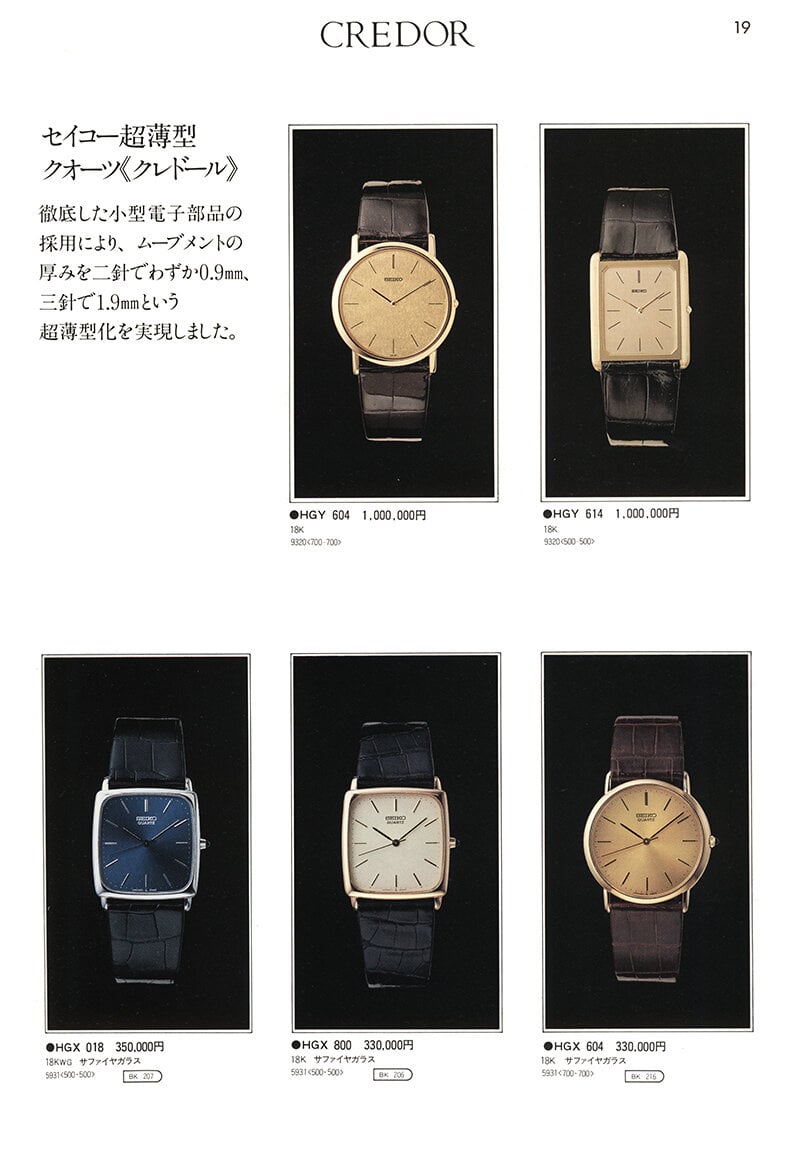
Well, this situation somehow irritated a few Swiss industry leaders, who decided to fight back. A man named Gedalio “Gerry” Grinberg, a Cuban-born watchmaker, and founder of the Movado Group, decided to specialize in ultra-thin watches and positioned his brand Concord as the answer to the Japanese hegemony. The man travelled to Switzerland and met with André Beyner, the head of Ebauches SA (which would become ETA, but also participated in the creation of Switzerland’s first quartz movement, the Beta 21). The result of this alliance would become the Delirium series of watches.
In early 1979, Ebauches SA announced the first Delirium watch, with a case of only 1.98mm – to be retailed, for example, by Tiffany in NYC as the Concord Delirium. Longines and Eterna also offered similarly powered watches (both brands were part of ASUAG, owner of Ebauches SA). Capitalizing on the expertise of a company named Renata (now part of the Swatch Group), Ebauches SA was capable of miniaturizing the battery to the max (1.1mm) and presented the Delirium II in mid-1979, with the Concord Delirium II and Eterna Linea Quartz watches measuring a mere 1.43mm.

The final act in this battle occurred in 1980, when Ebauches SA presented the Delirium IV, with a thickness for the entire watch of only 0.98mm (as a comparison, a standard plastic credit card is 0.76mm). This was made possible by using rotating discs instead of traditional hands, as well as a special ultra-thin battery and crystal. There were a few issues, however, regarding the watch’s robustness, as simply fastening the strap could bend the case and pop the crystal out. This watch known as the Eterna Linea Museum Watch would thus remain a concept never to be mass-produced. This Delirium IV nevertheless remains the world’s thinnest watch ever produced.
23/12/2024 - updated with the addition of the Konstantin Chaykin ThinKing prototype


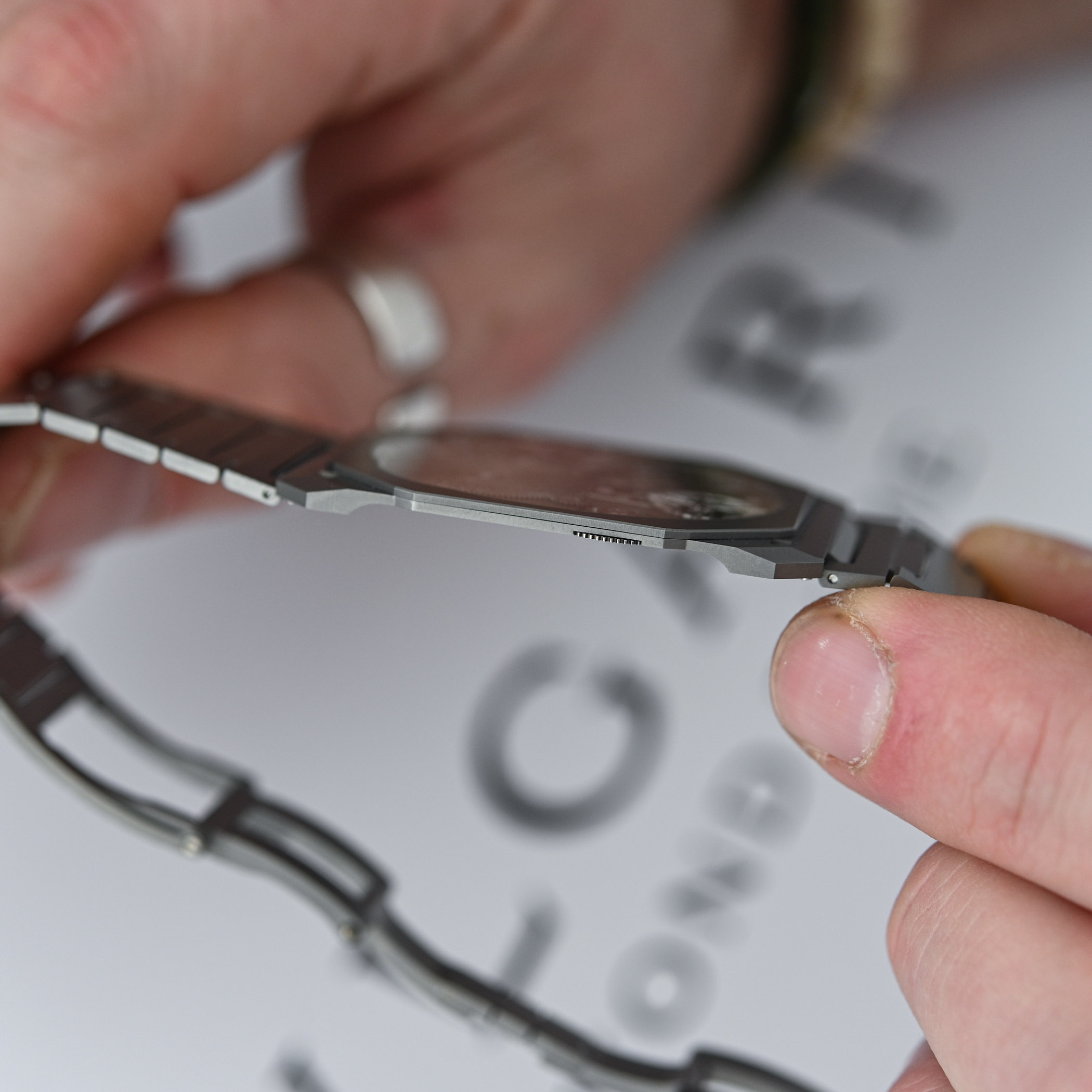
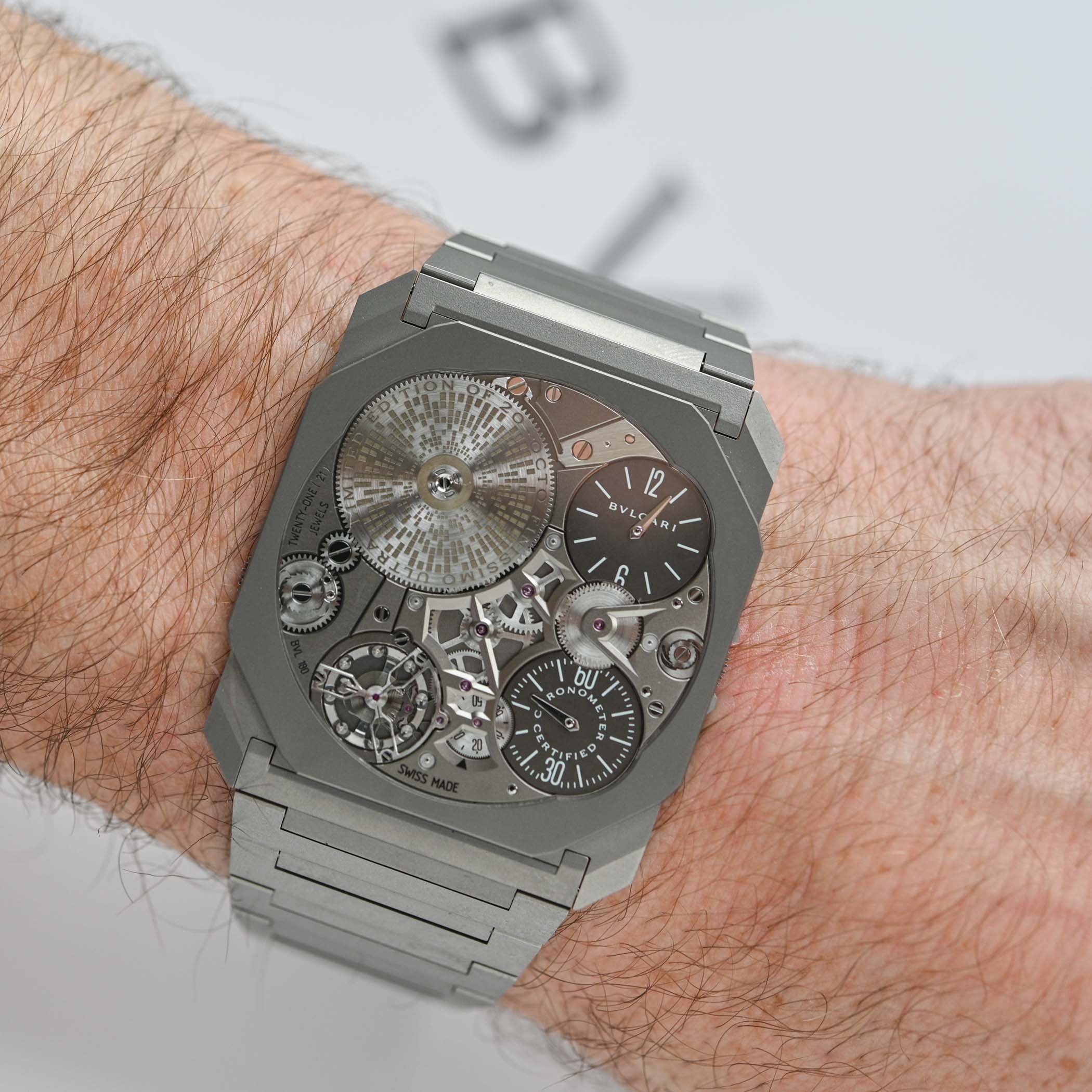
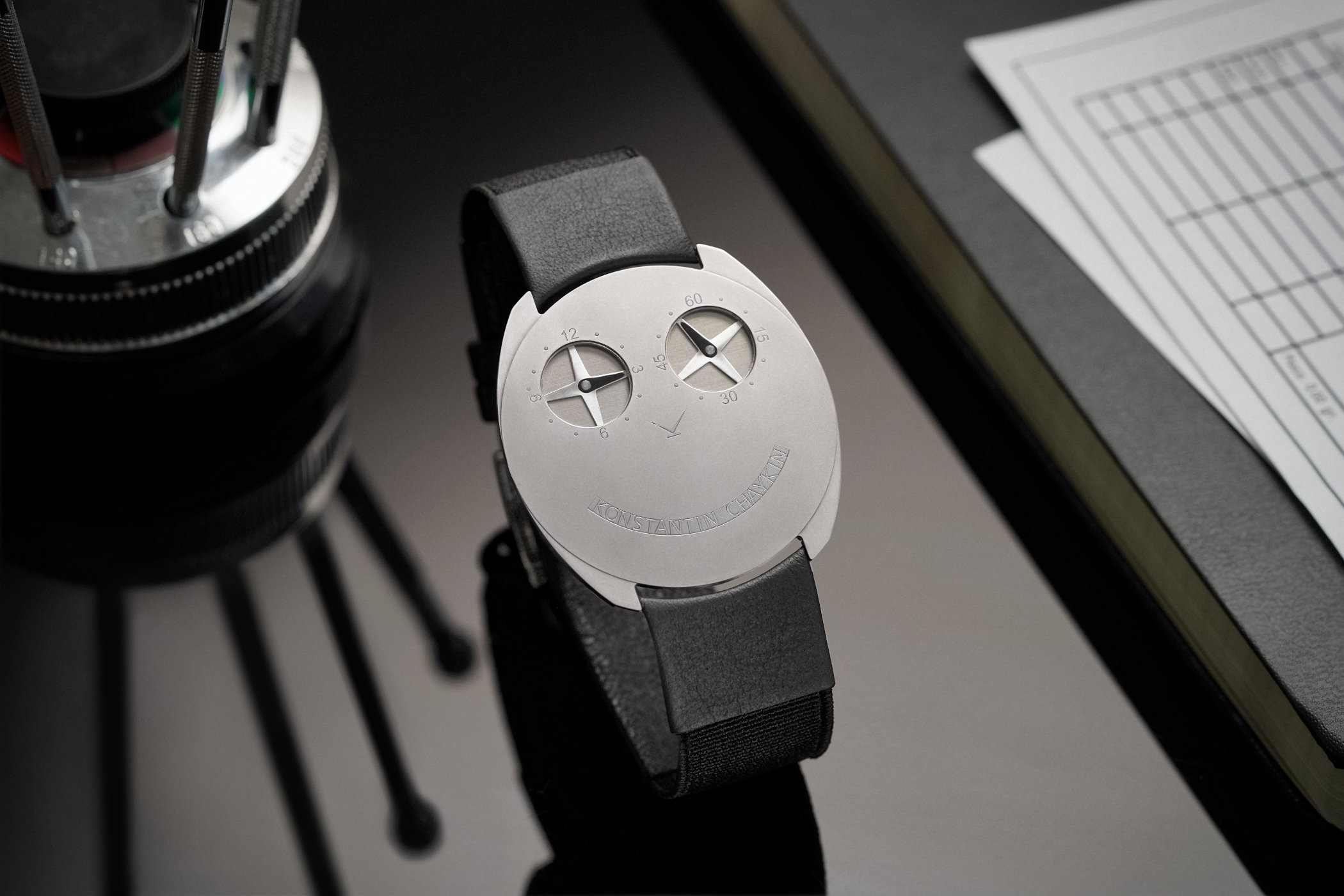
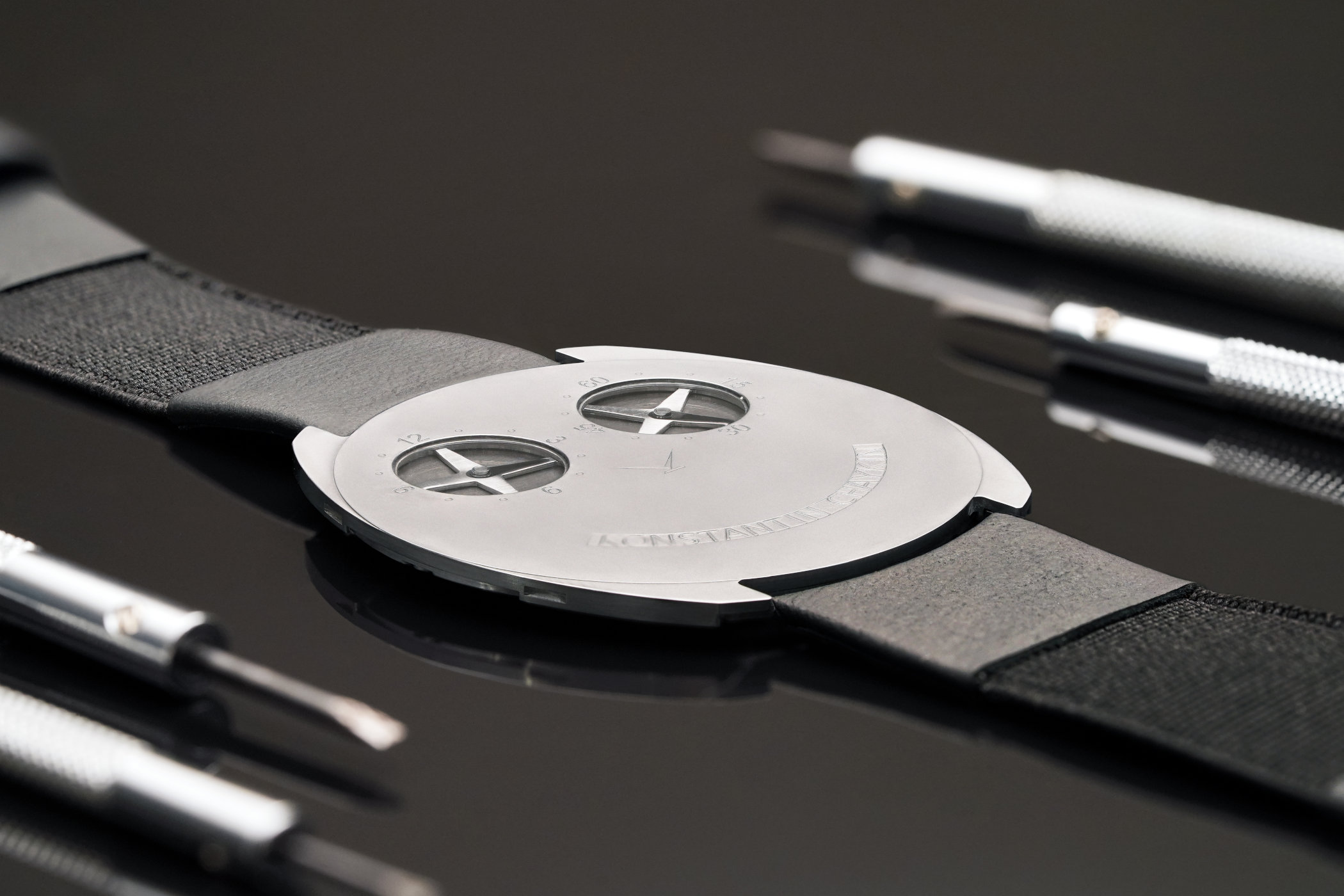
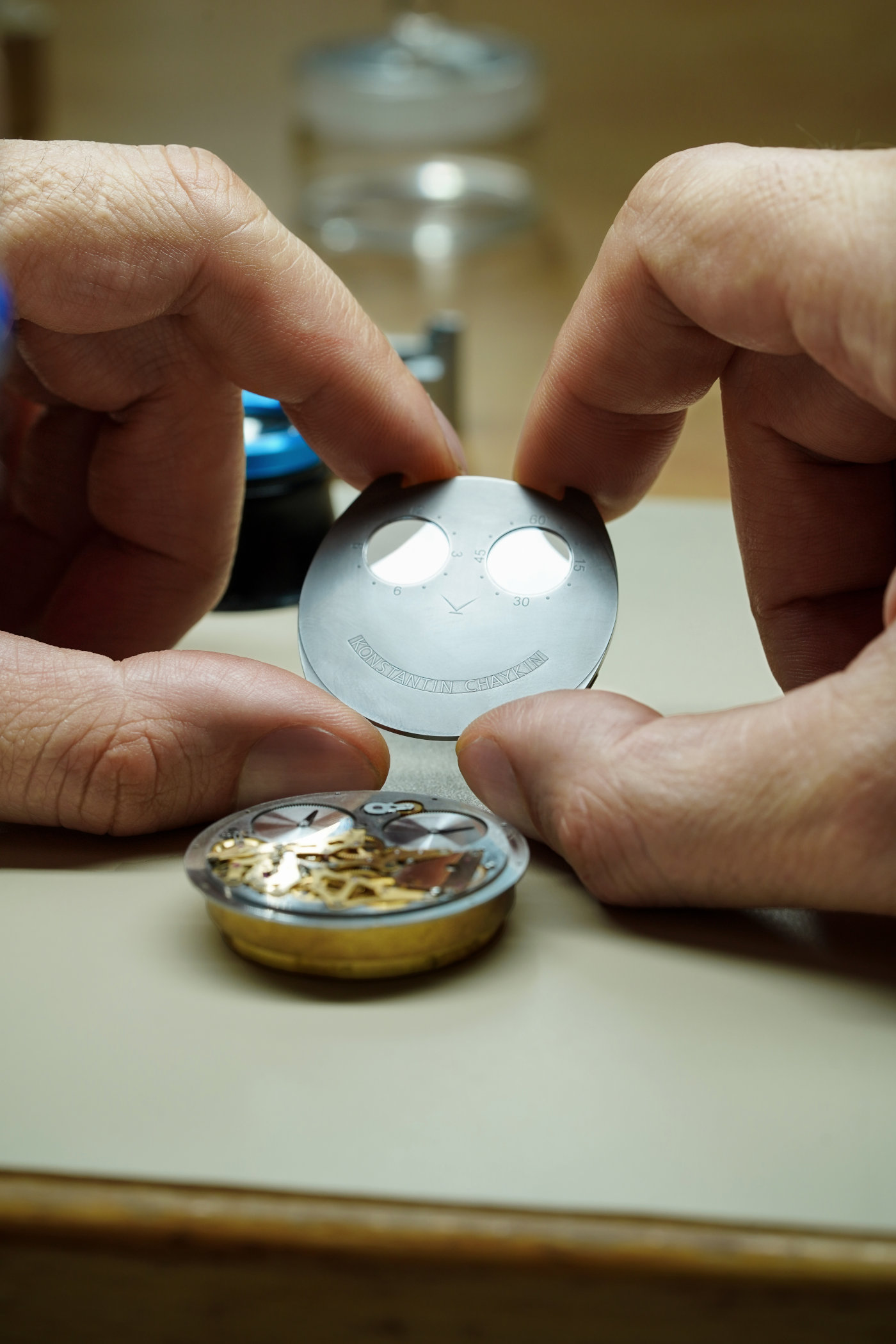
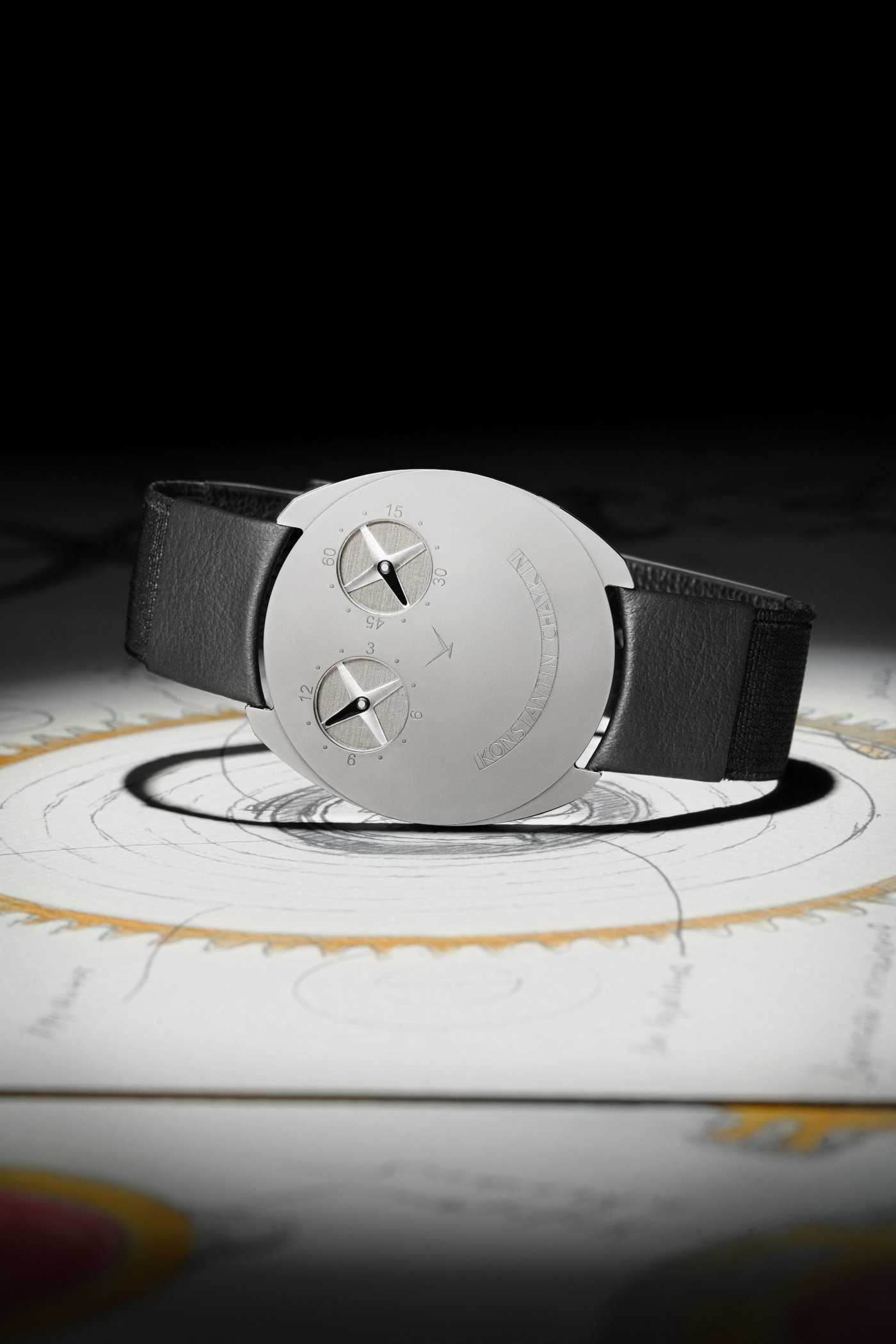
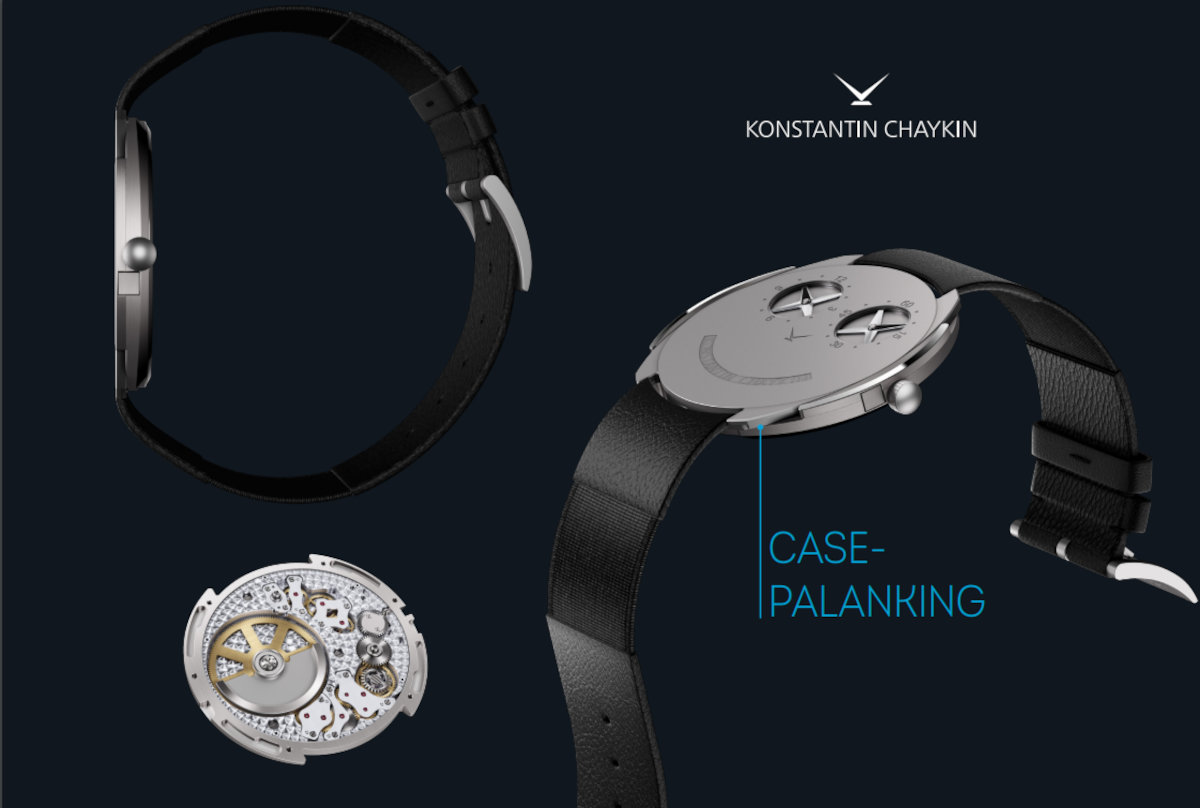

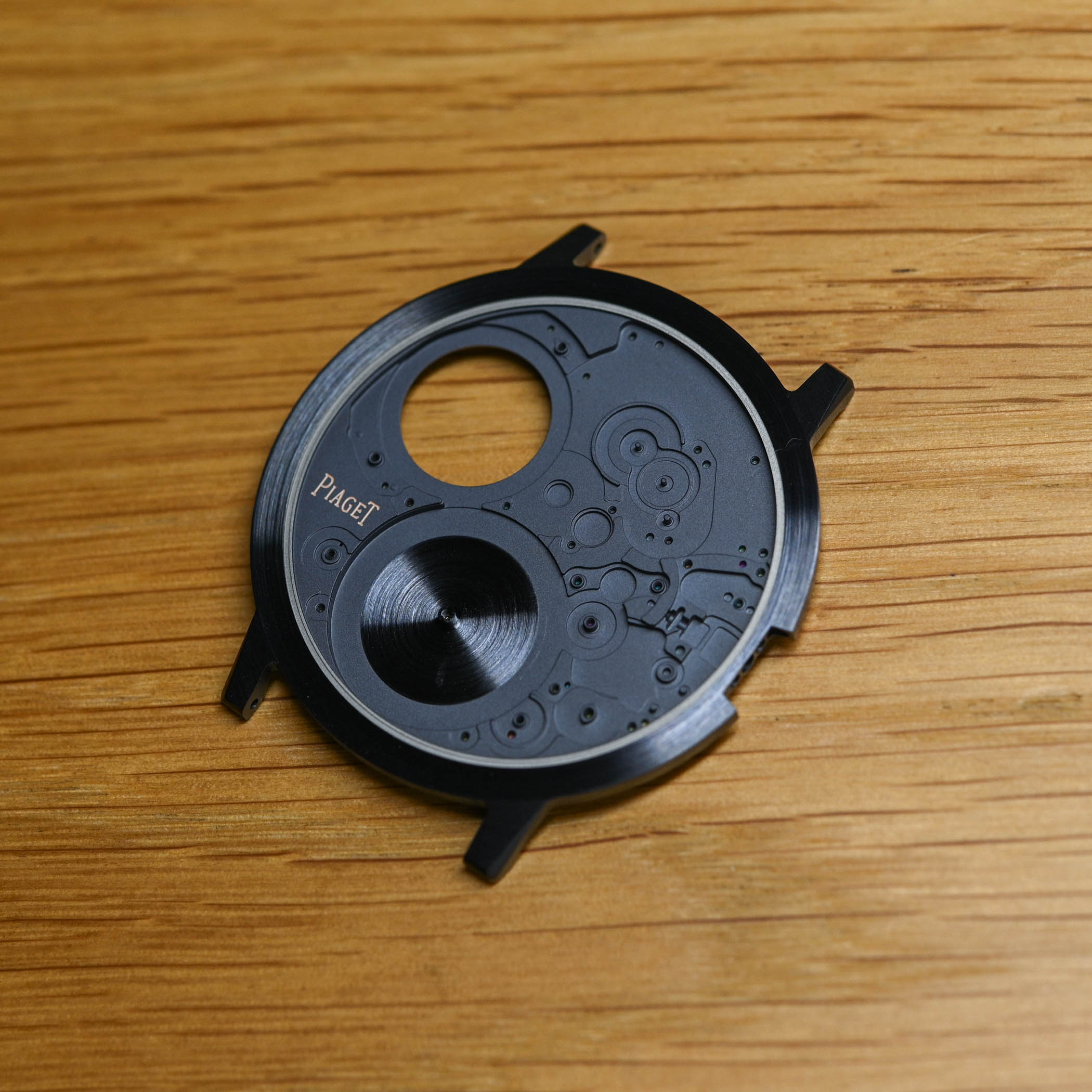
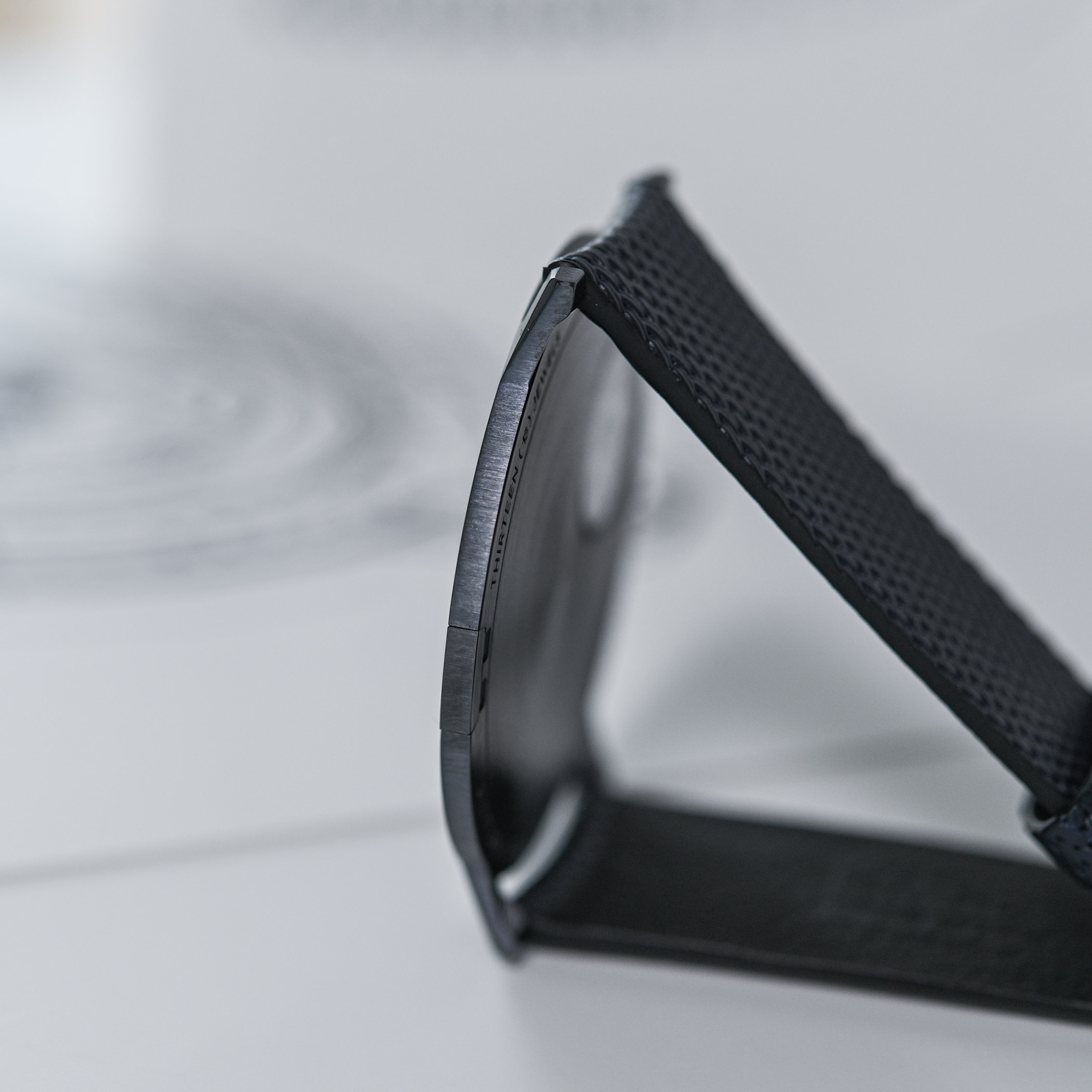
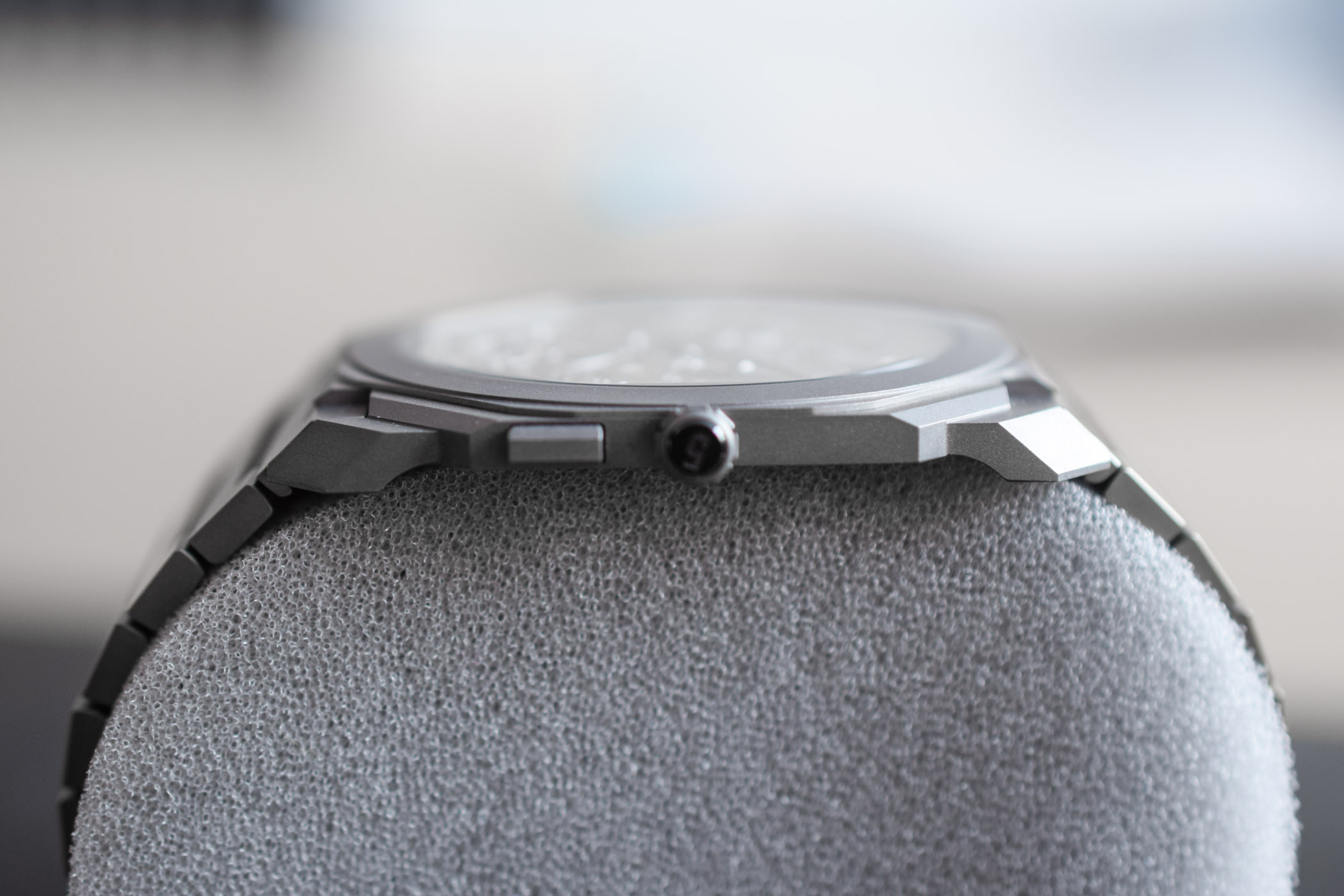
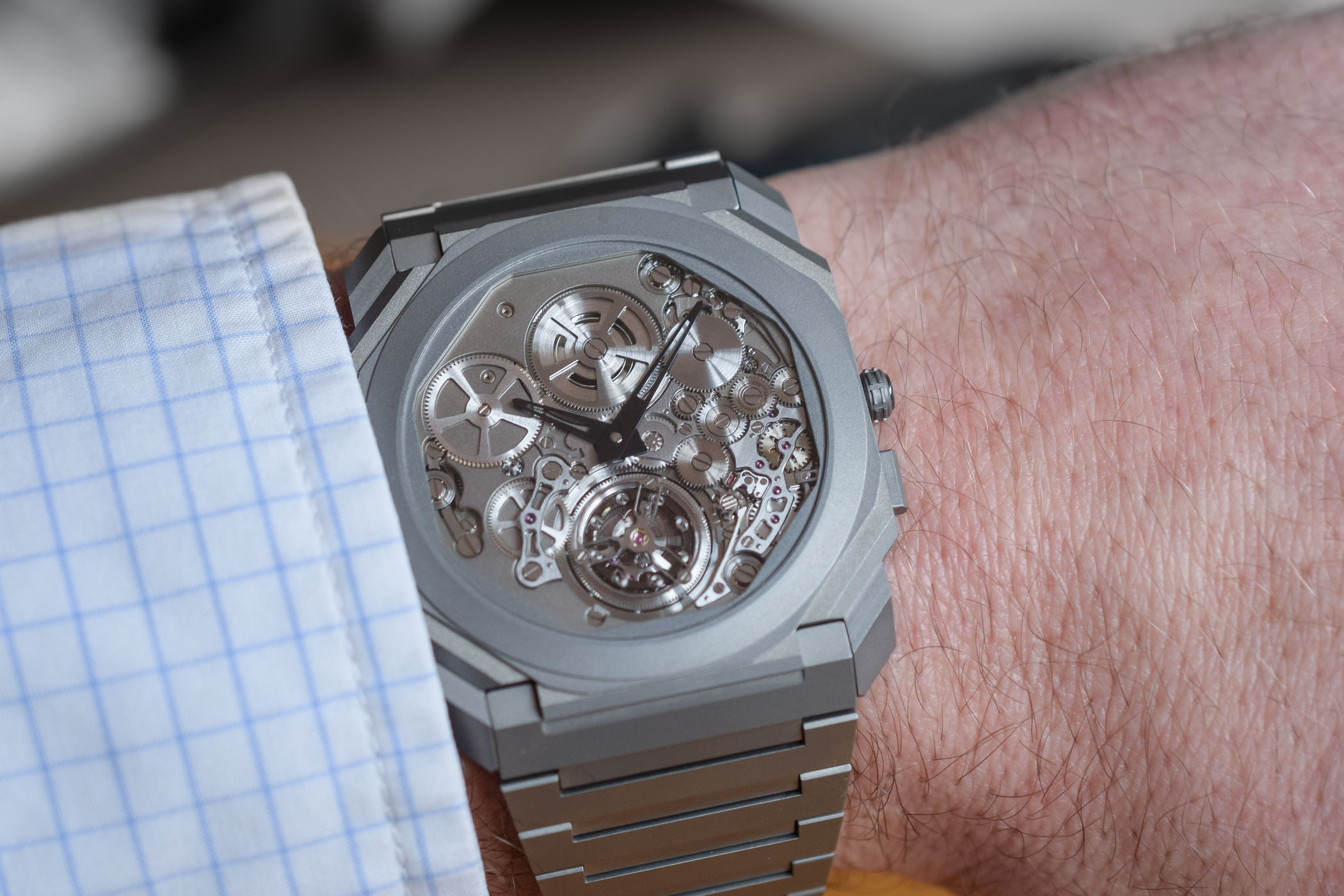

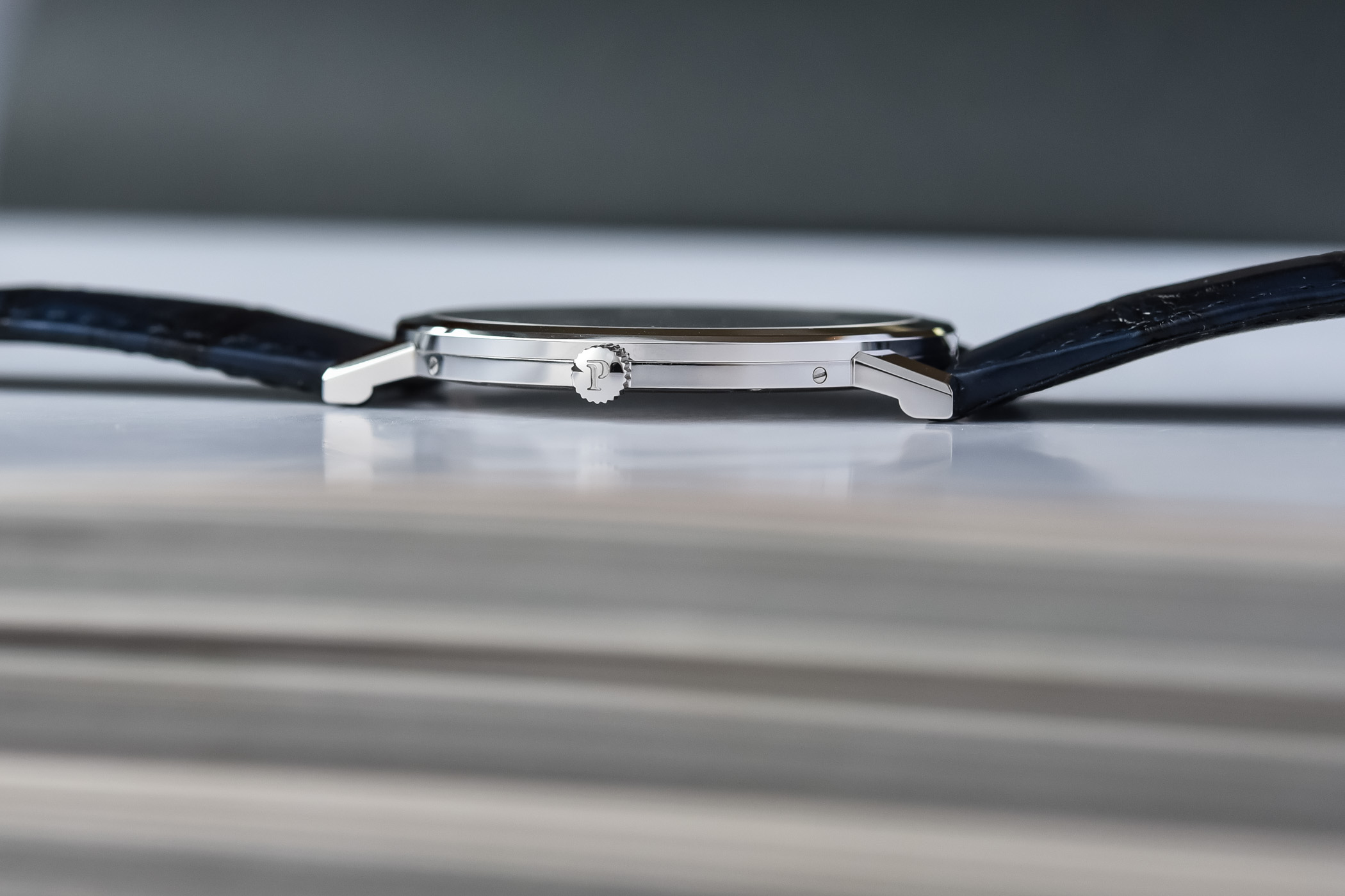
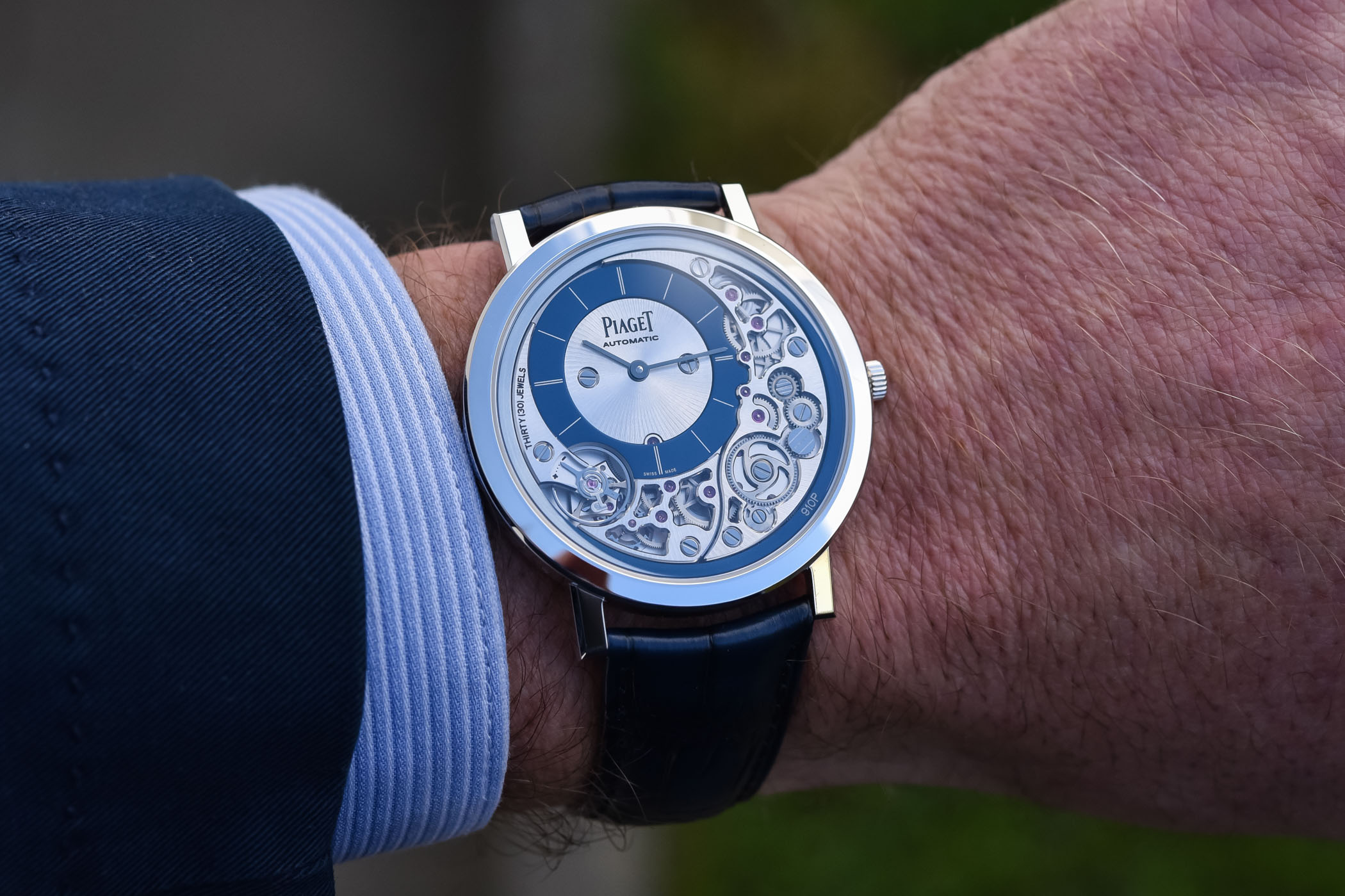
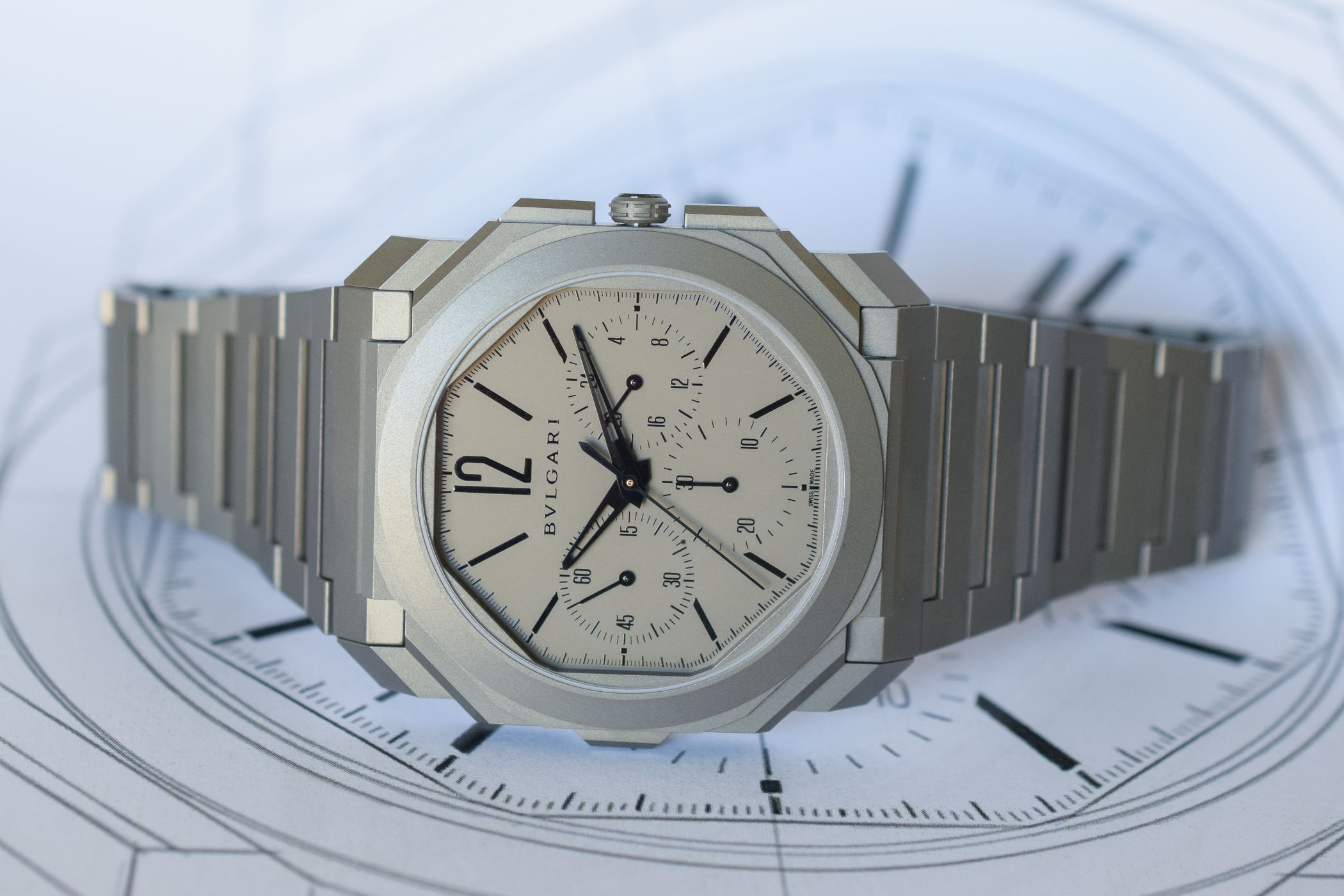
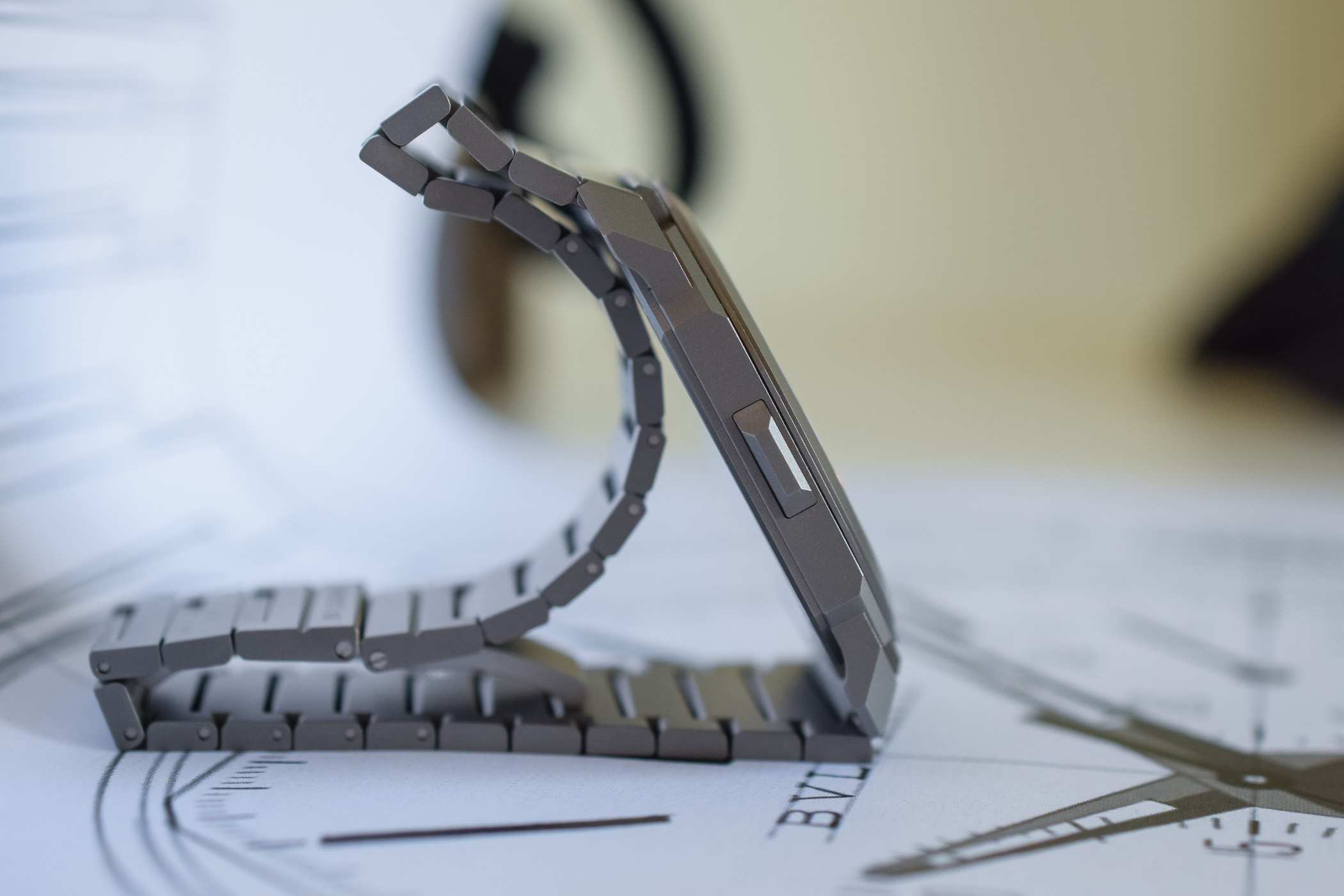
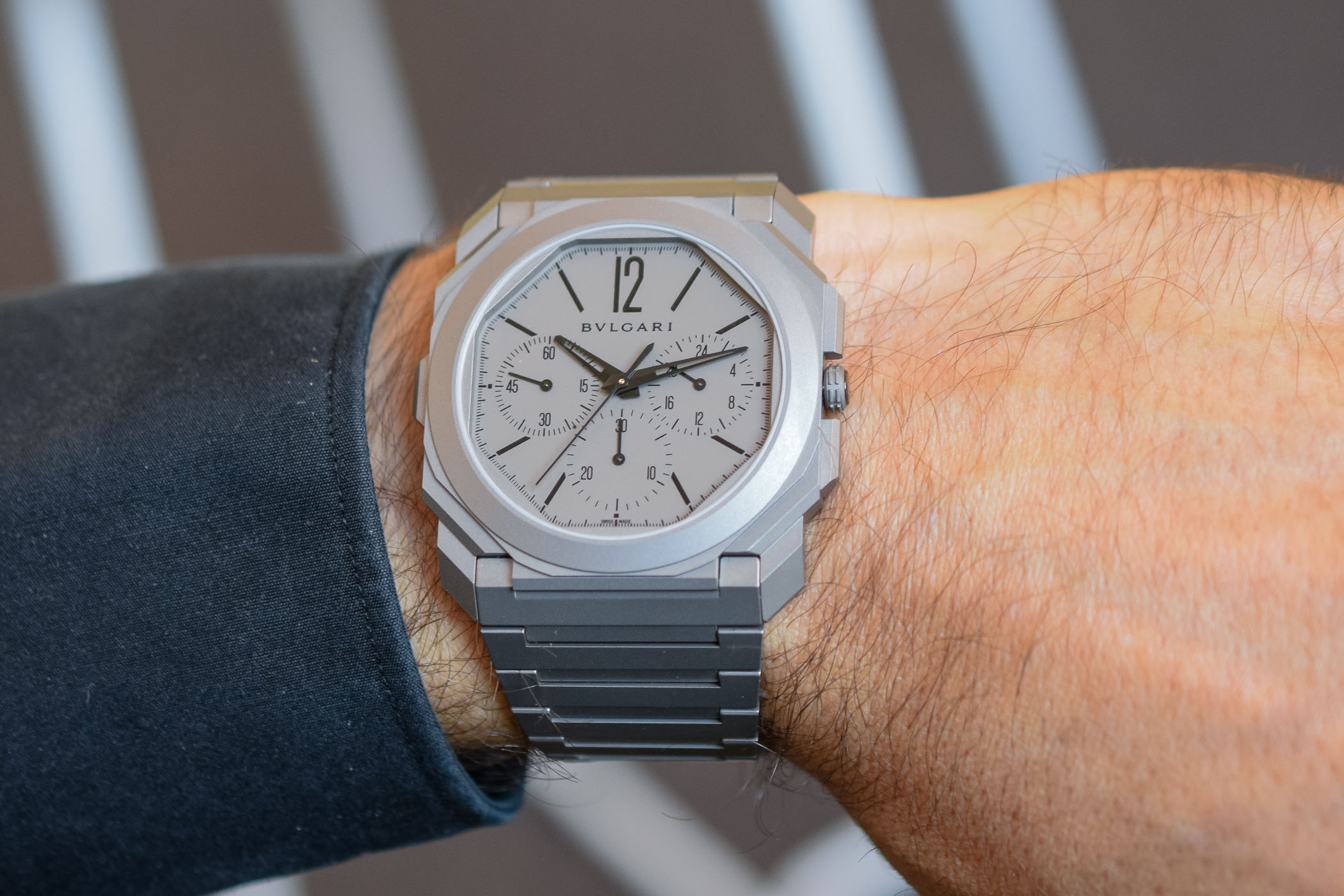

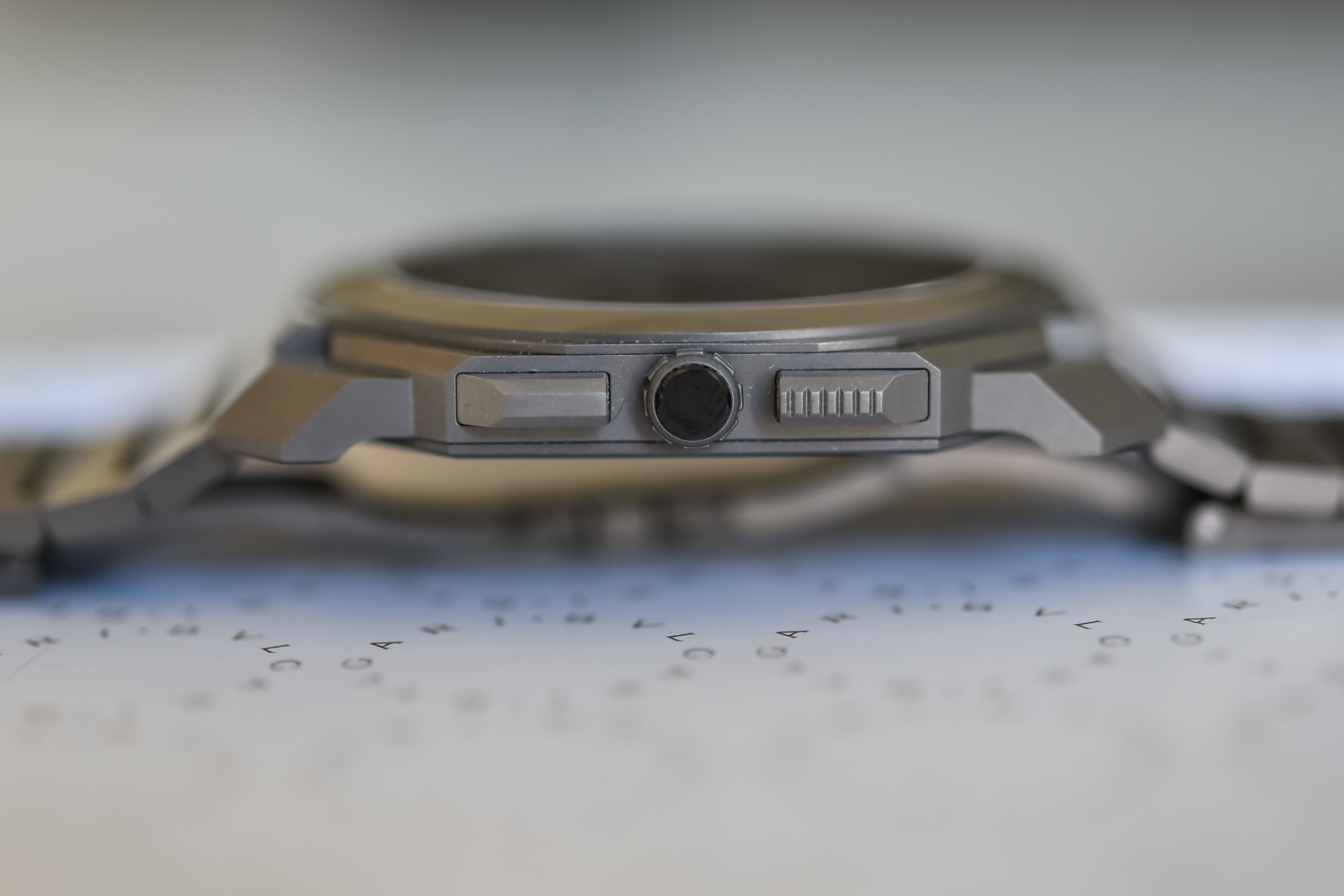
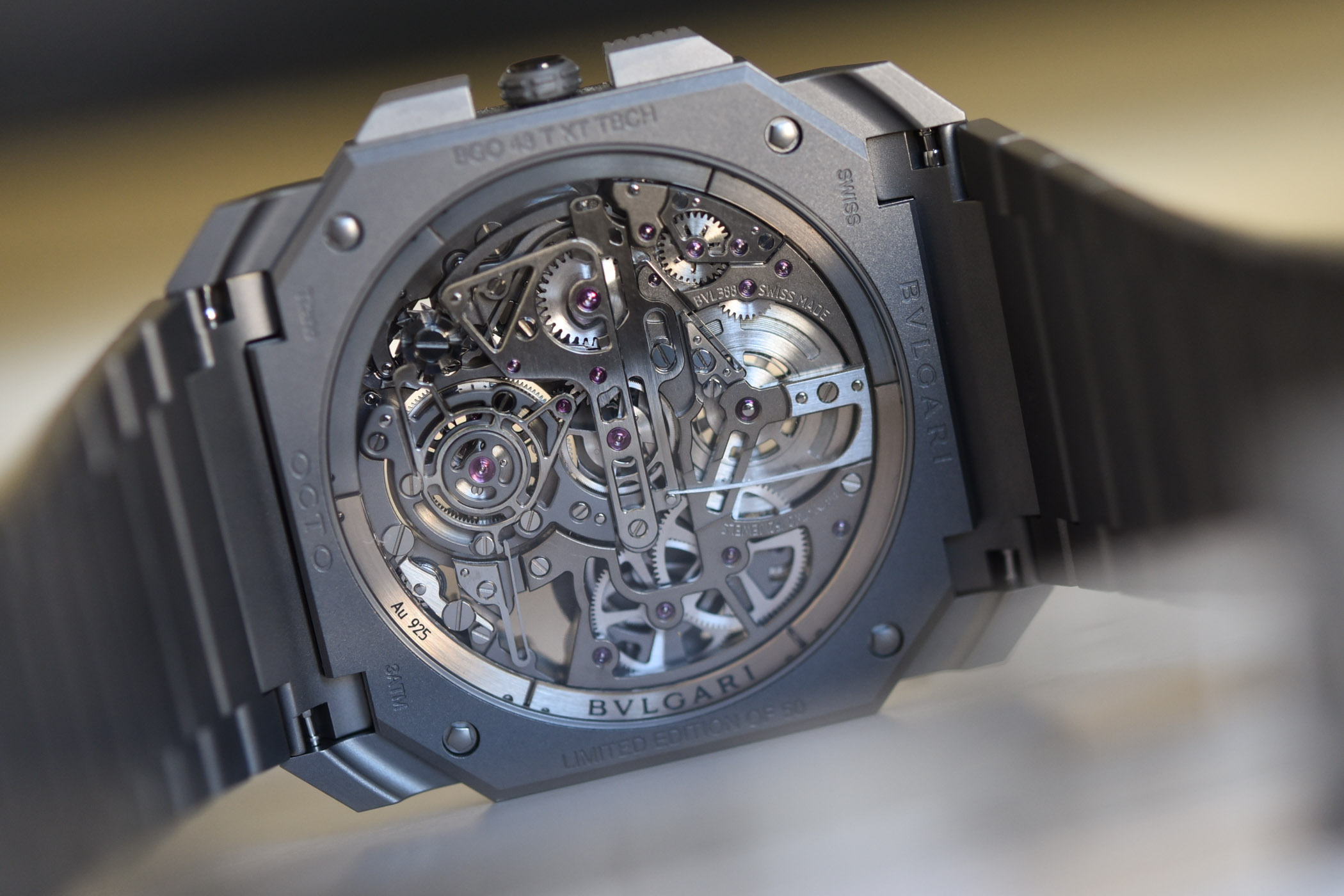
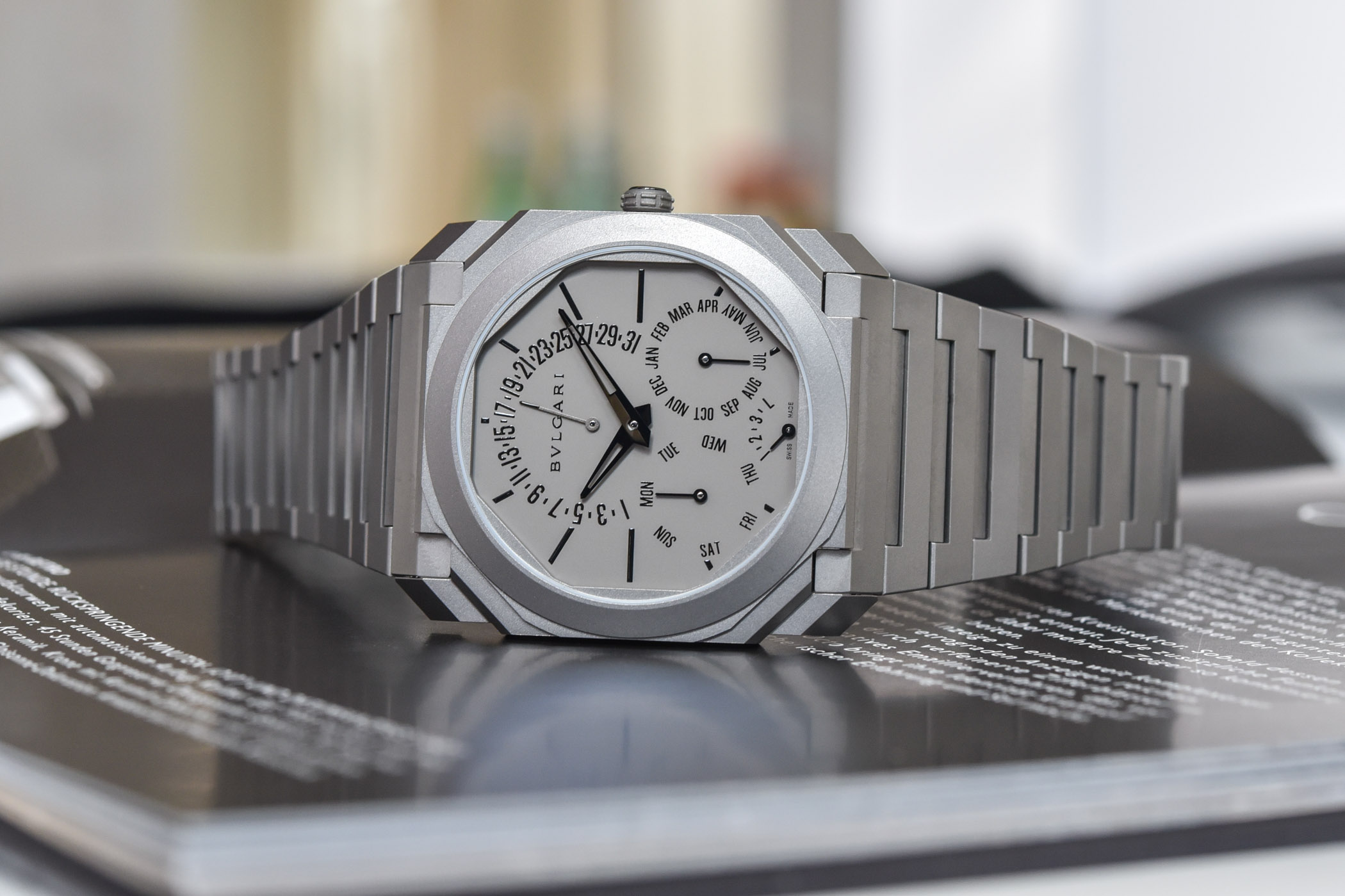
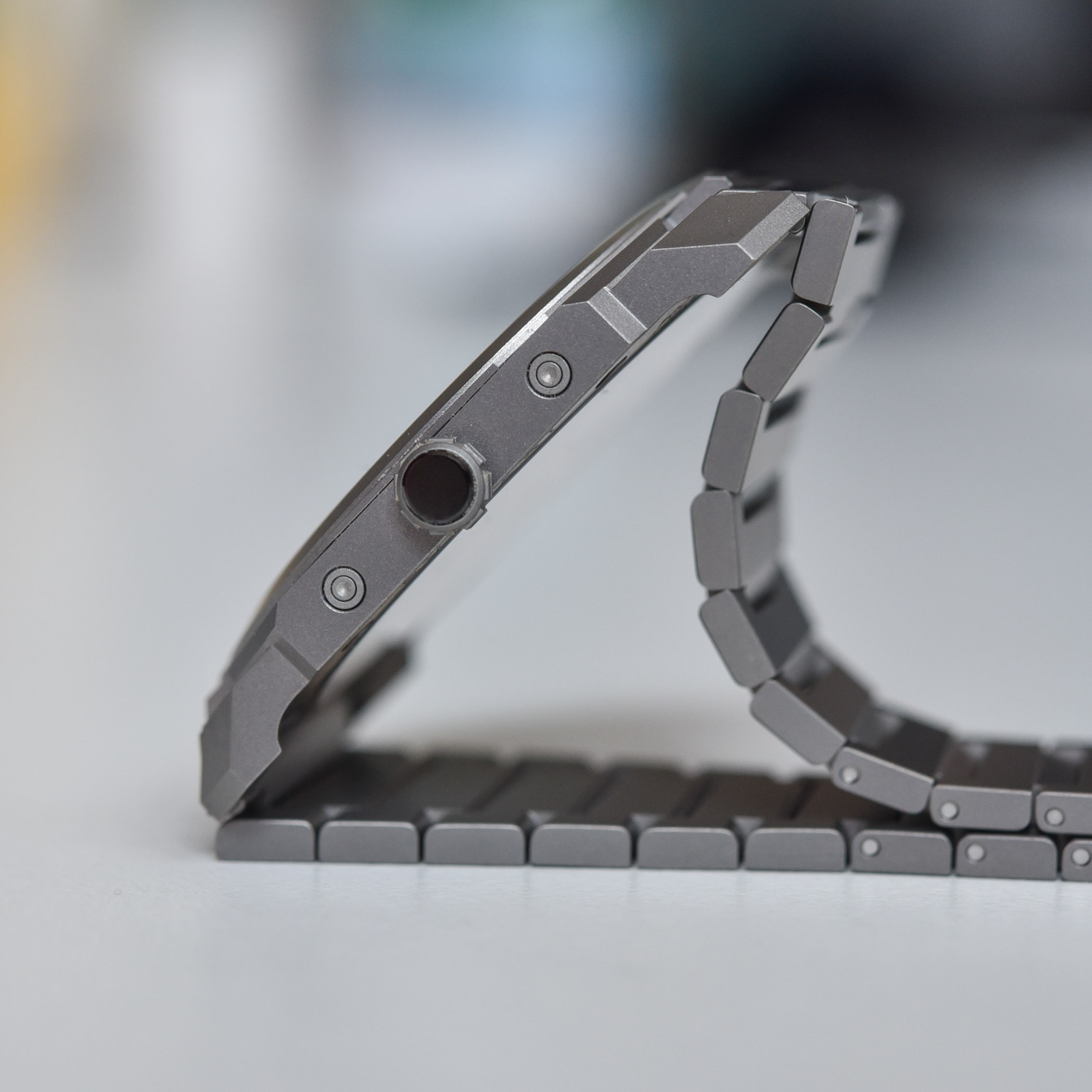
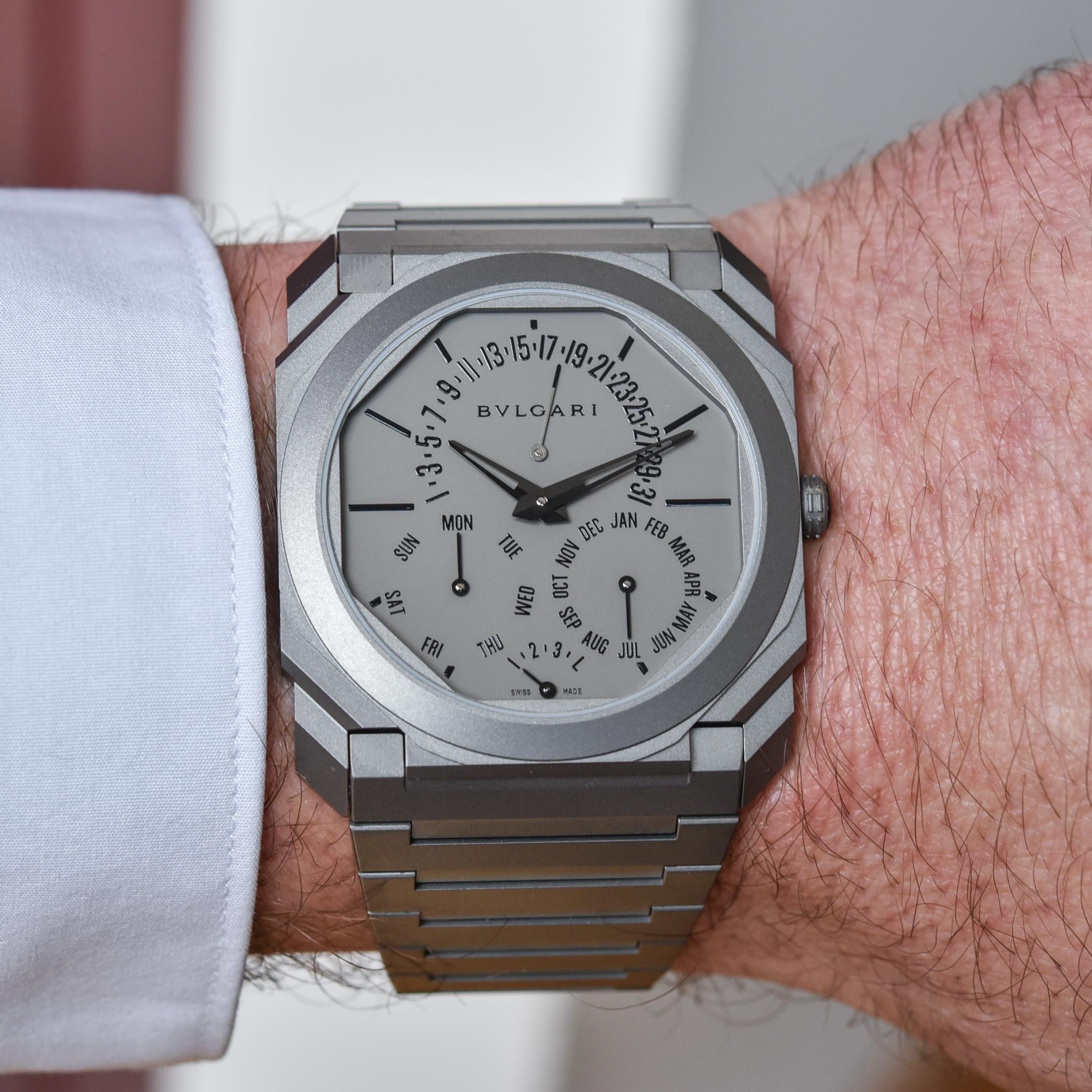
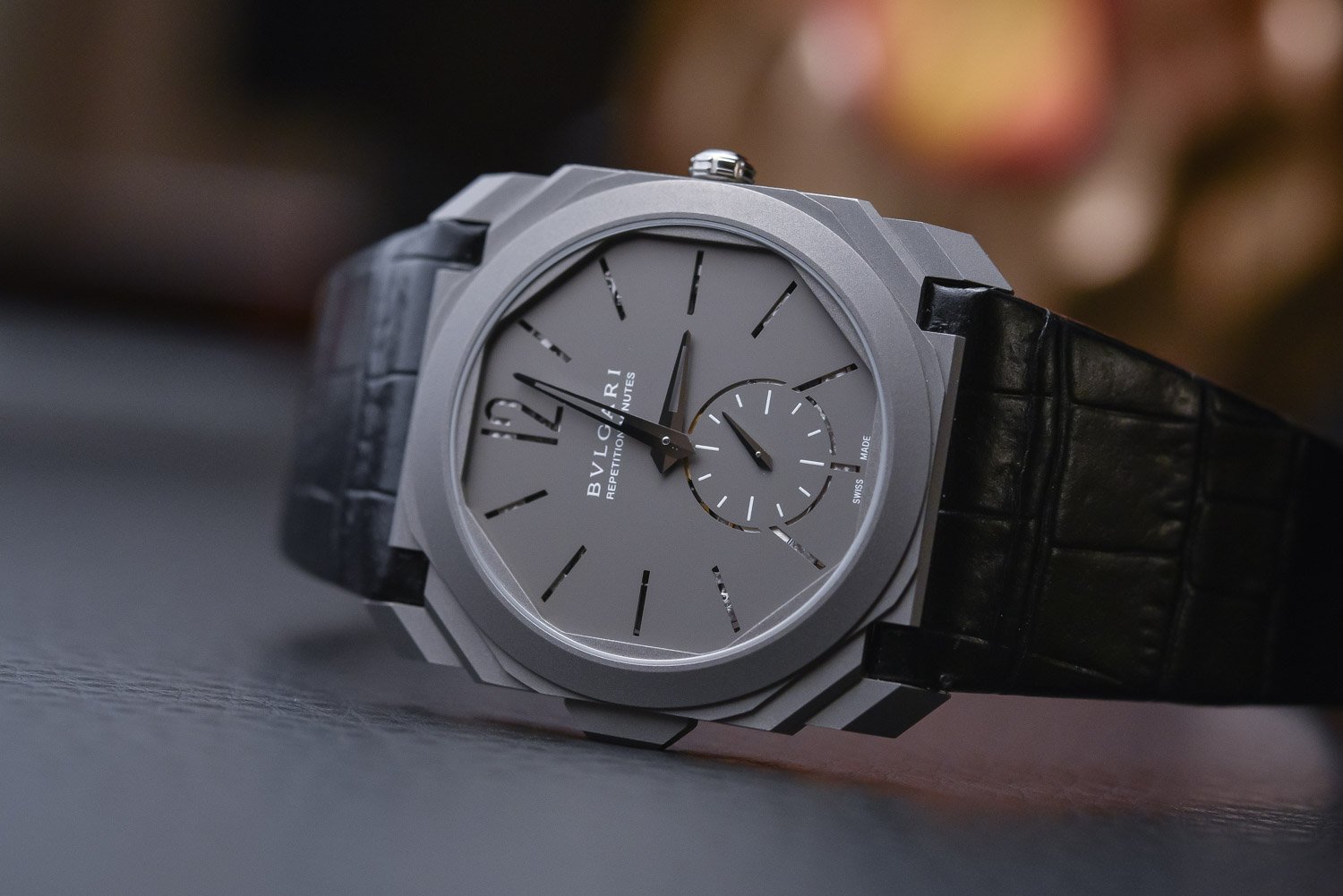
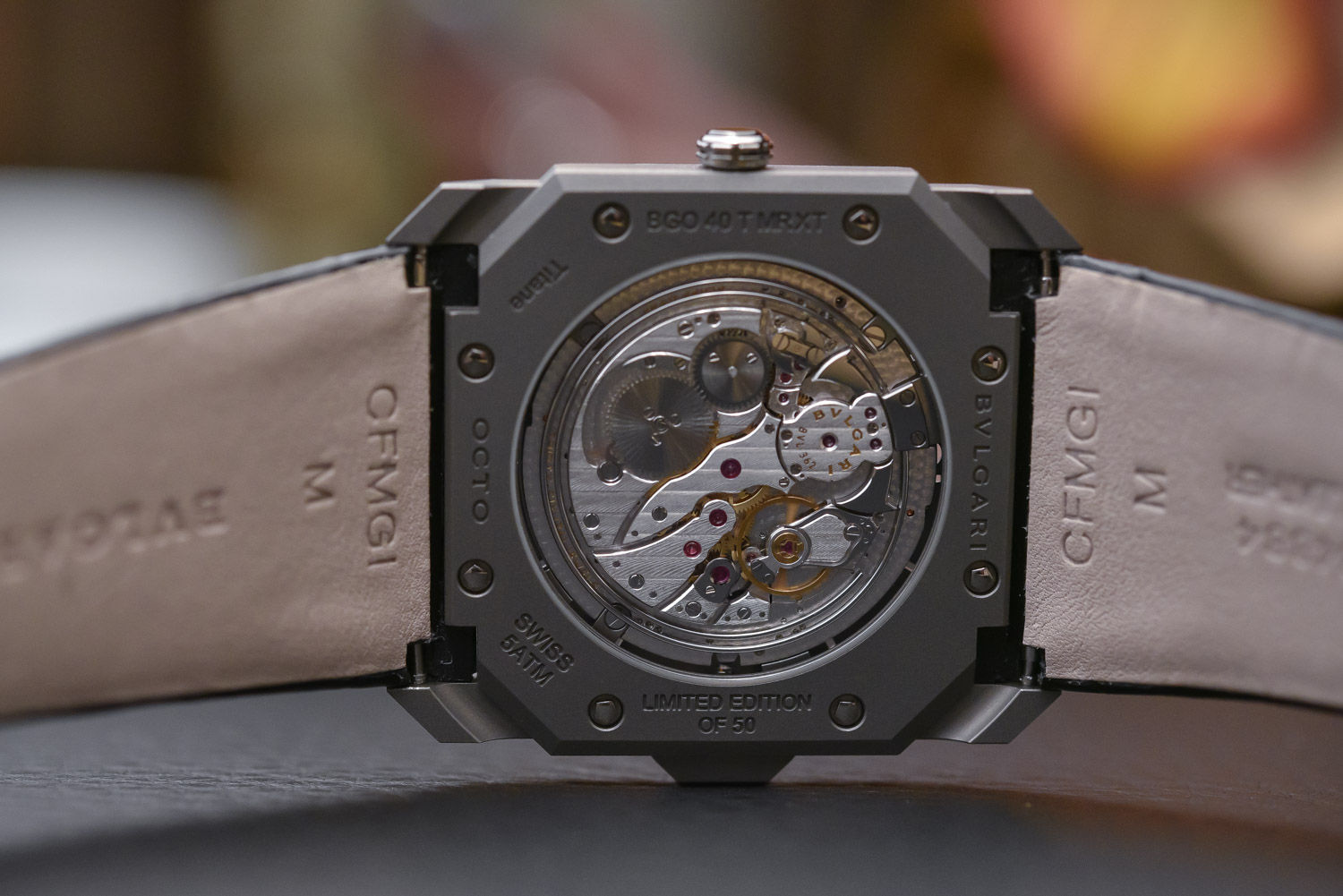
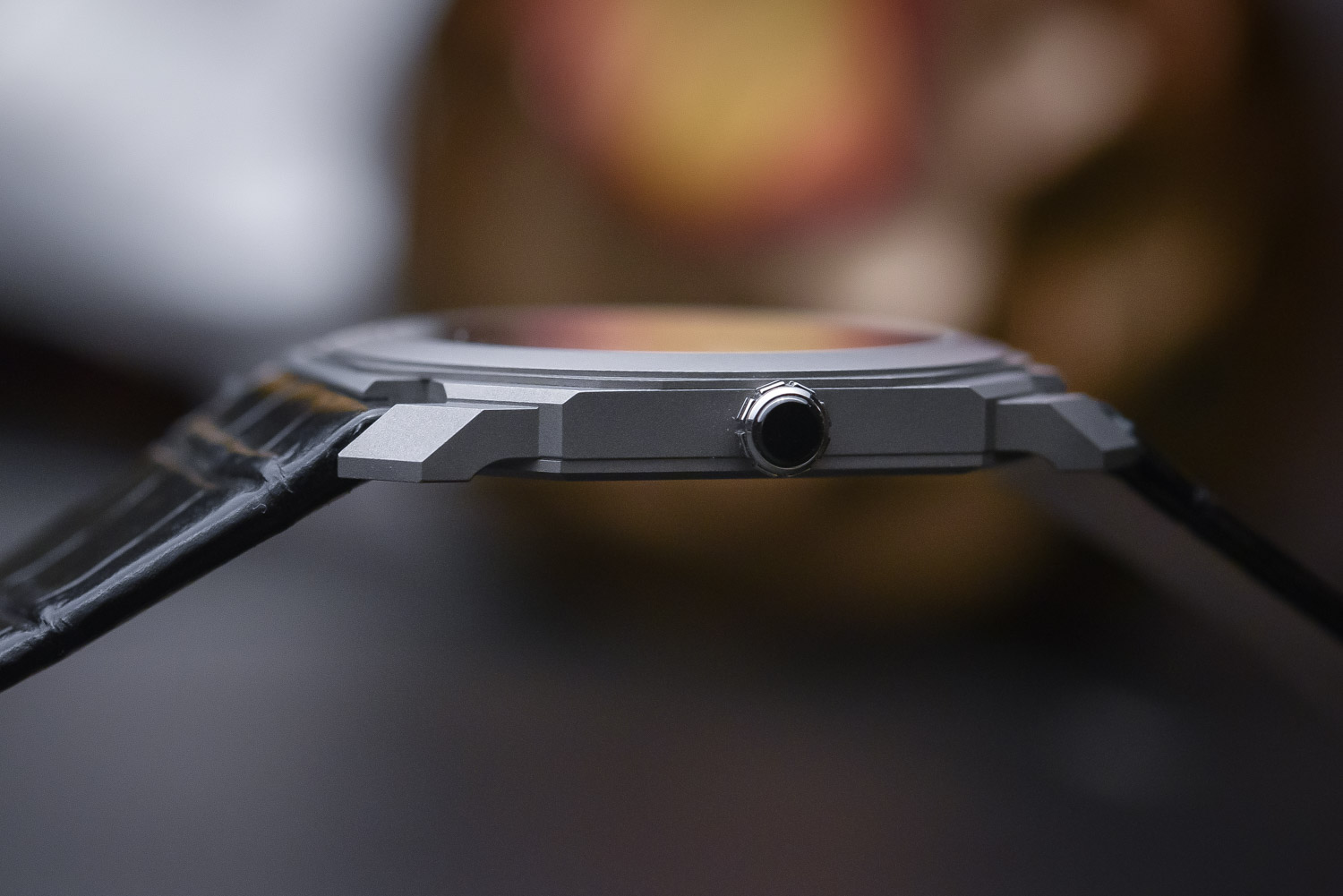
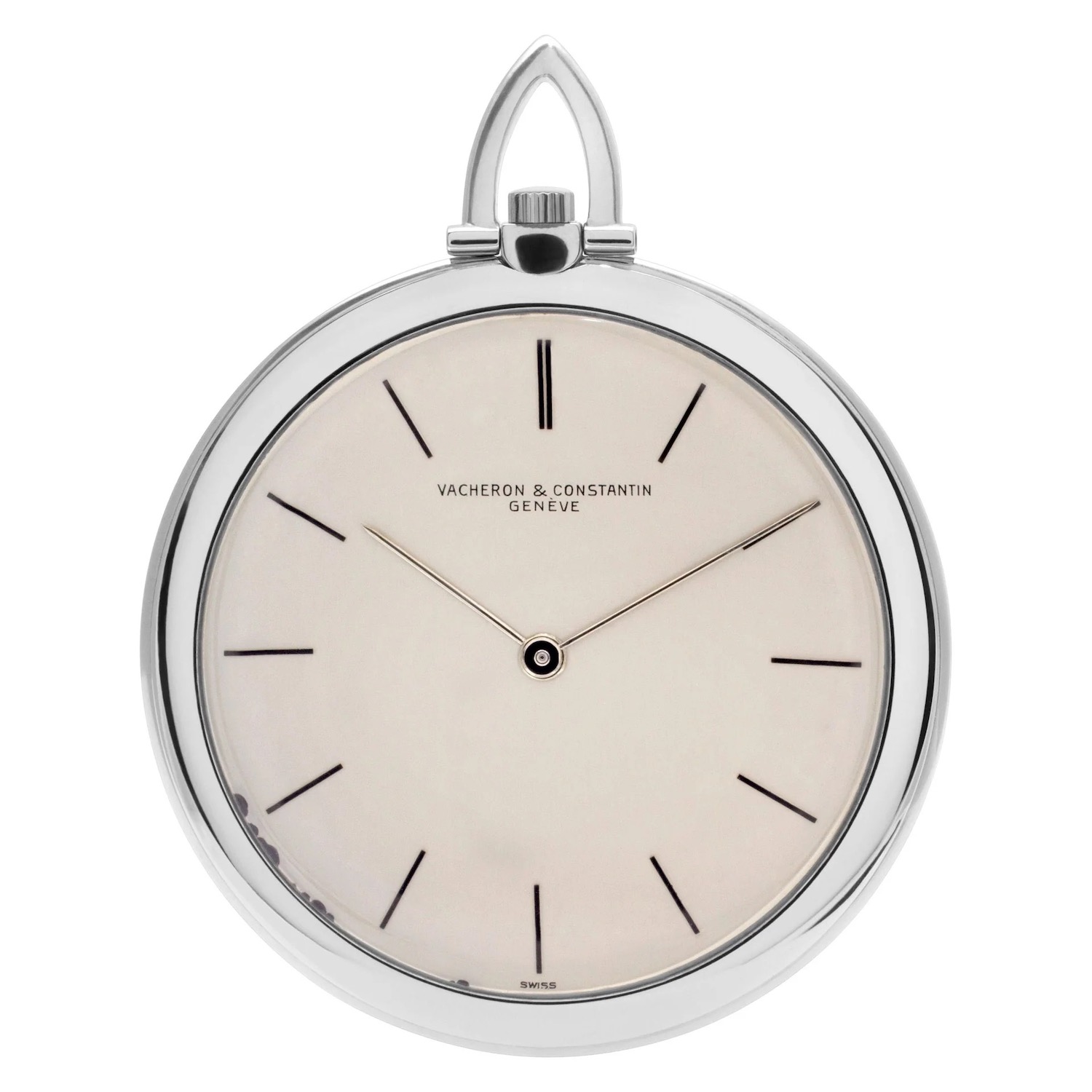
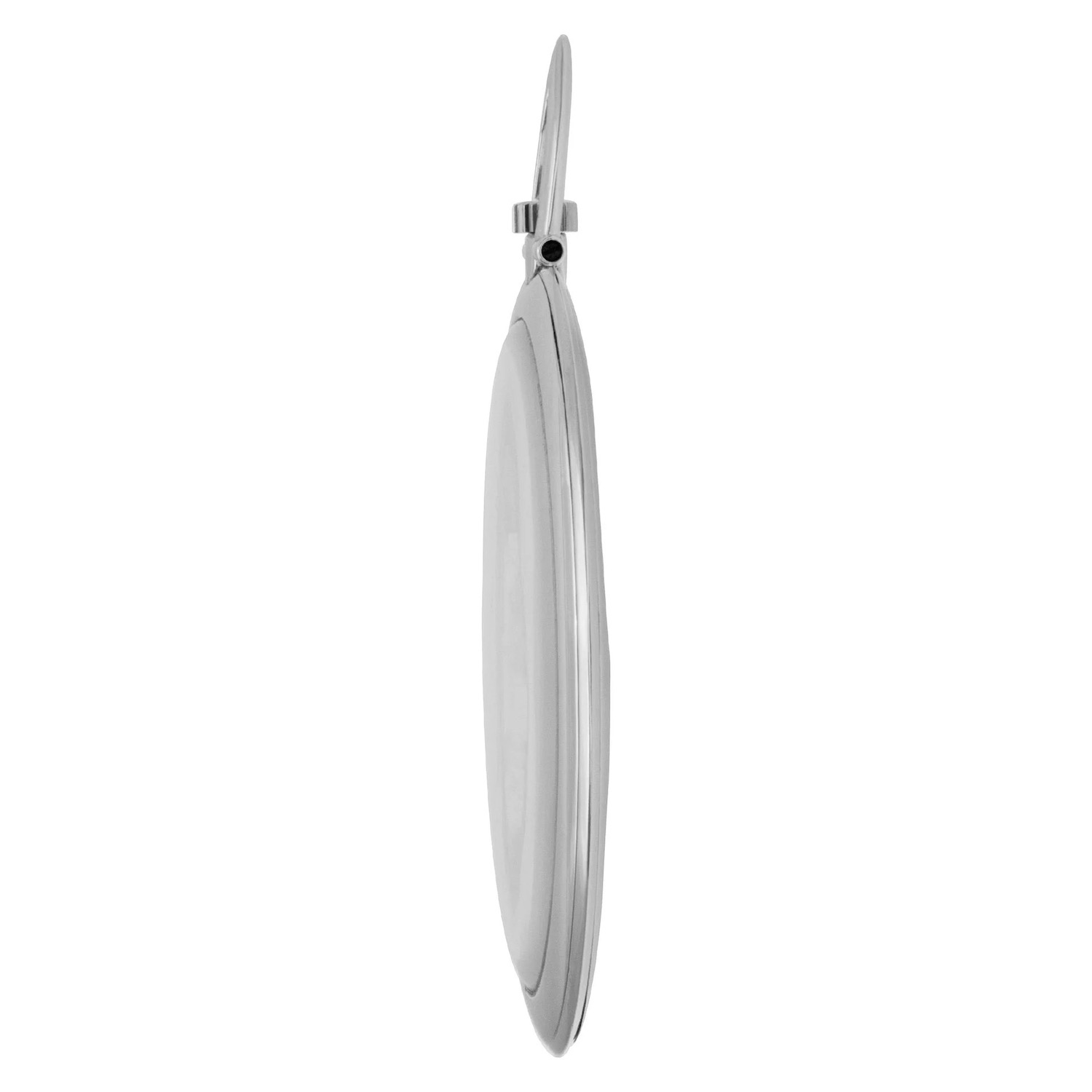
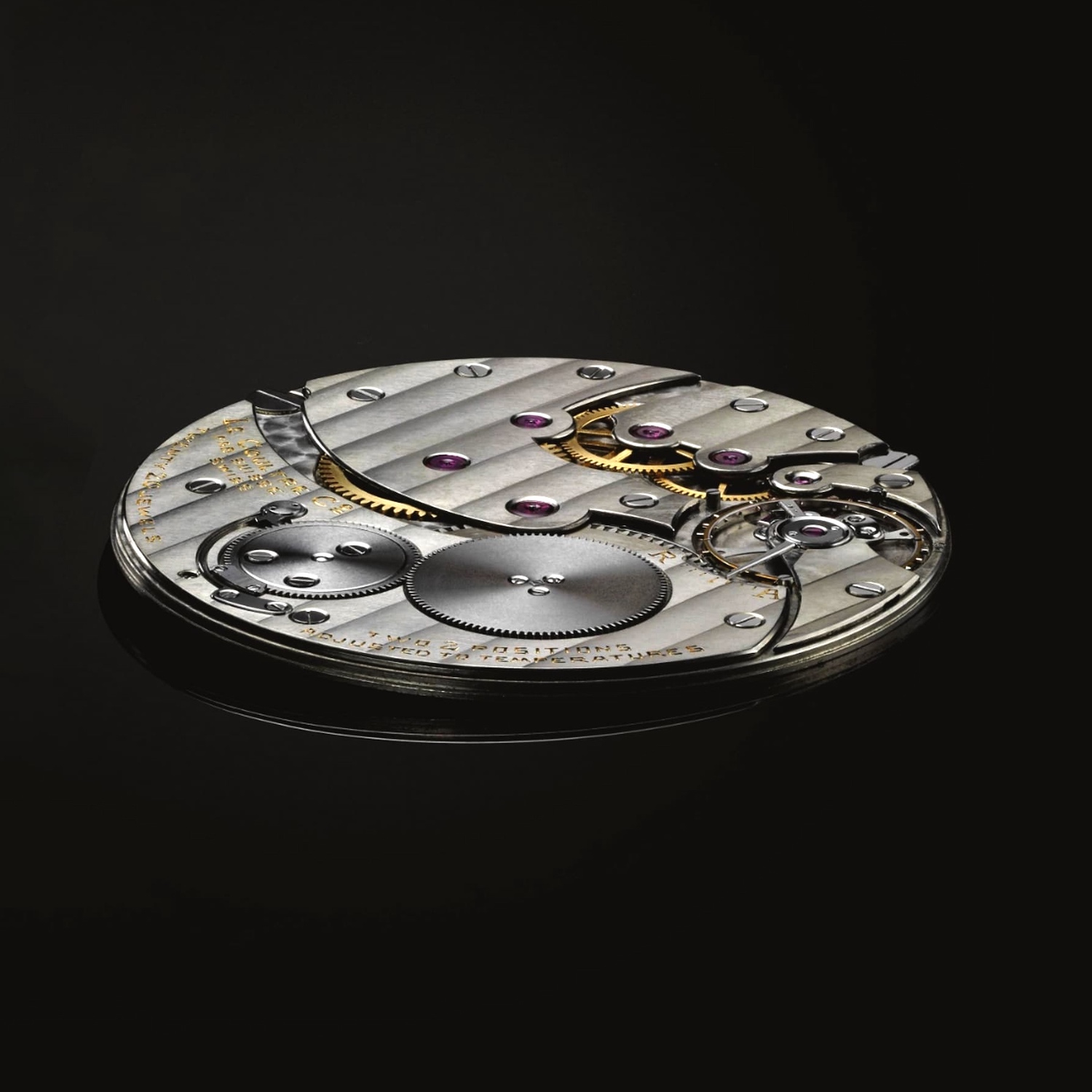
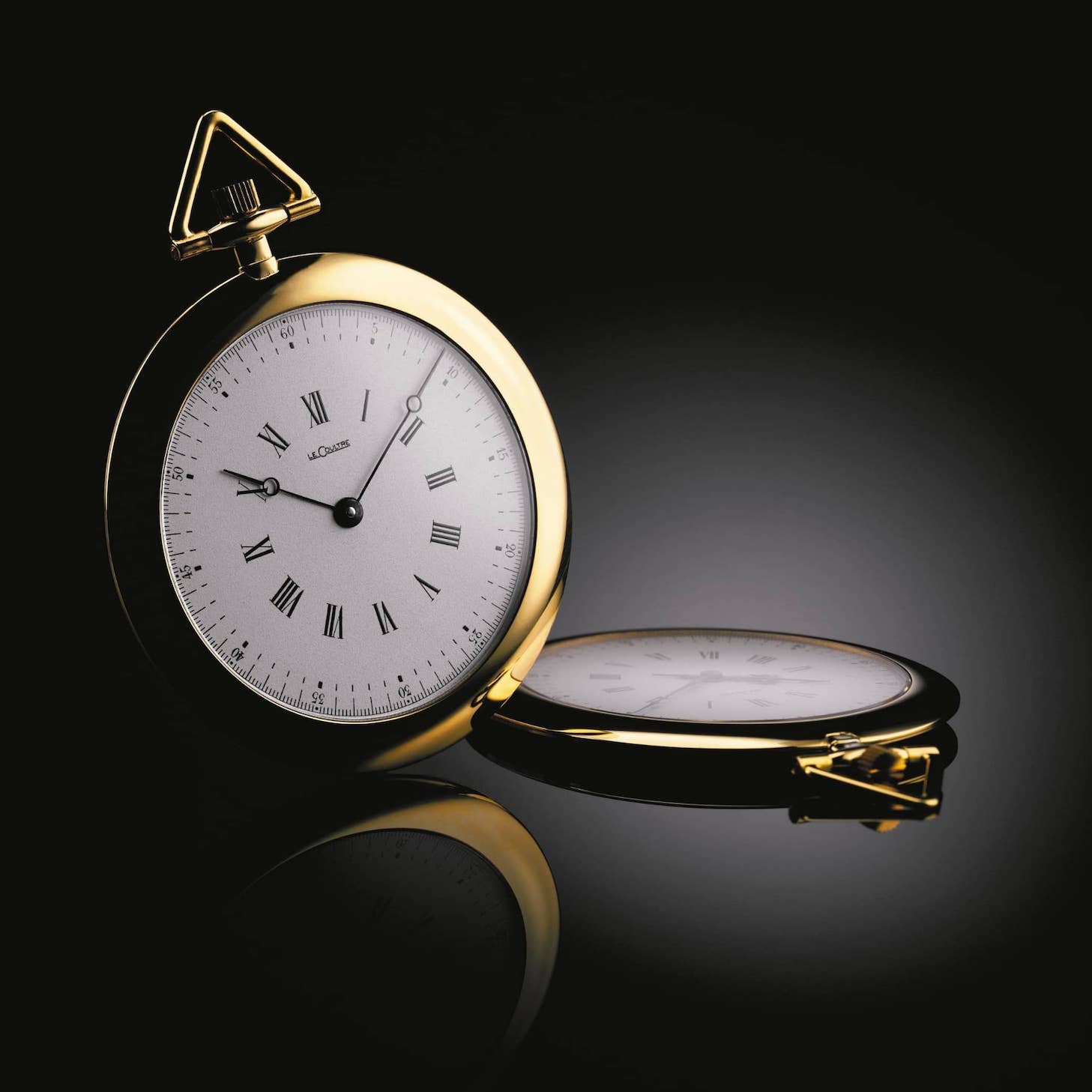
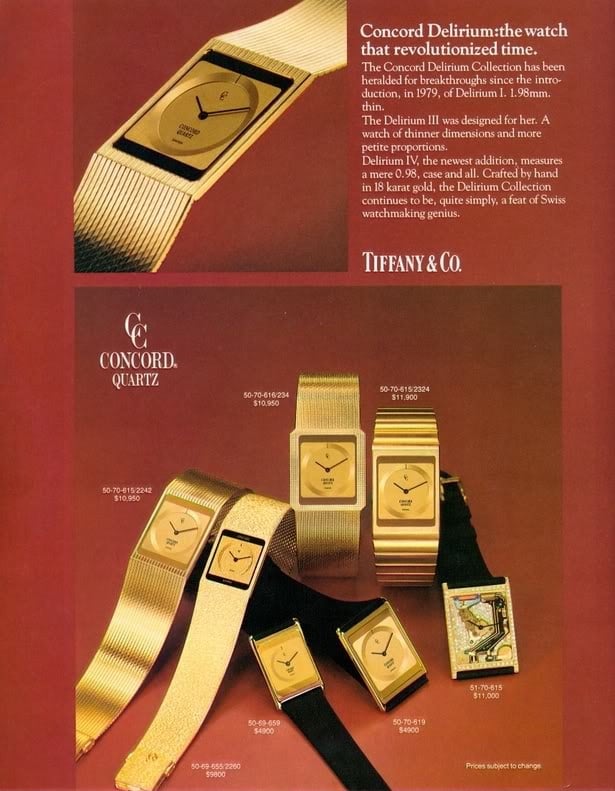
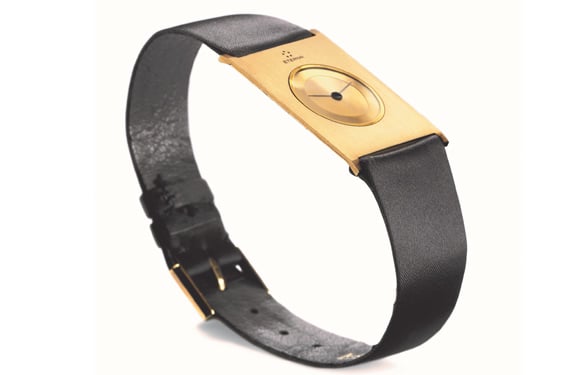
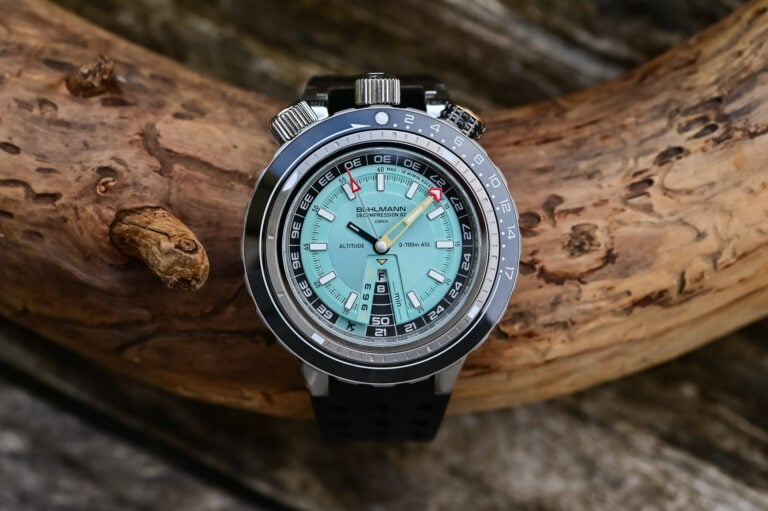
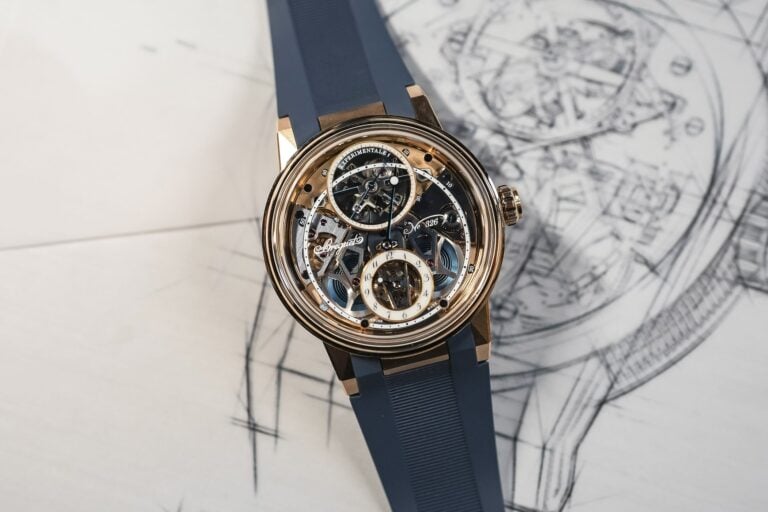
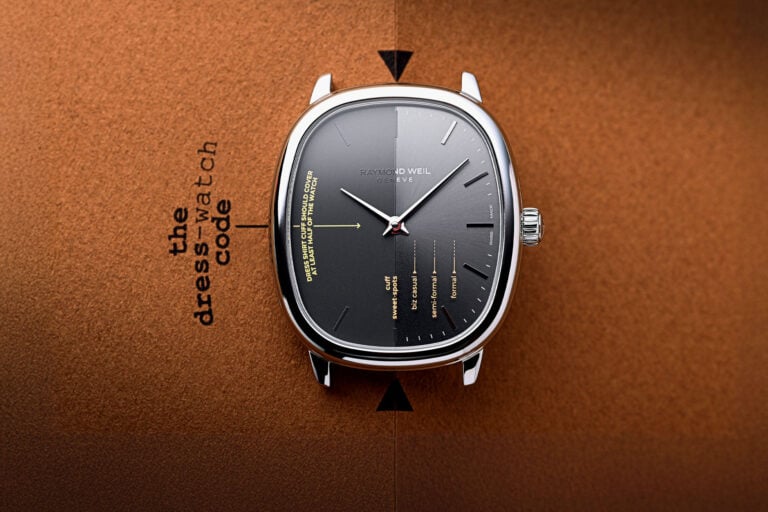
10 responses
Well, looks like BVLGARI has some categories left to go..
Thinnest dive watch that meets all the ISO specs?
Thinnest solar quartz…Eco Drive One 2 handed, I believe. Granted, very few companies make any solar quartz. I’m partial to the, I believe slightly thicker, 3 handed with seconds on a sub dial.
Thinnest Quartz omitted. Should have been included. (Citizen’s Eco Drive One for instance)
I have a 1982 Tiffany marketed and signed Concord 9/Quartz that is 4 mm thick. It was remarkably thin for the time and remains thinner than most watches today. What is more important, is that it’s still in working order and a classic dress watch. That is, unlike the ones in your article, you can still wear it if you wish…
Yes it ls the thinnest watch but who wants a watch easy to destroy and very hard to repair and. So expensive.
@ Taylan – the thinnest quartz watch is in, and it’s the Delirium IV watch, which is the thinnest watch ever created too. The Citizen Eco Drive One is 2.98mm, with a 1mm thick movement, and is the thinnest light-powered watch and movement.
@Craig Lewis – the Citizen Eco Drive One at 2.98mm, with a 1mm thick movement, is indeed the thinnest light-powered watch and movement.
@Kurt T – we have been searching hard for that… It’s really hard to find a clear winner for the thinnest dive watch, as it also depends on the specs – ISO, not ISO, 100m WR or more. But we’ll keep looking and try to solve the problem.
The Real grail watch in this category – any category – where there is really only one other contender, one other watch (huge watch) is the thinest Alarm Chronograph.